Which way does the greater than sign go: Remembering the Greater Than Sign & Less Than Sign
Posted on2 Tricks for Remembering Greater Than and Less Than Signs
What do those little sideways carat symbols mean? They’re inequalities! Inequalities can be difficult to get a handle on, especially because the greater than and less than signs look so similar. But these symbols are very useful, because they help us show the relationship between numbers or equations in a way that doesn’t just say that they’re equal.
In this article, we’ll be talking about what inequalities are, how they’re represented, and how to remember which sign means what.
Not knowing what the signs mean may make your math homework feel something like this.
What Are Greater Than and Less Than Signs For?
Inequalities are math problems that don’t resolve with a clear “equals” answer—instead, they compare two things, demonstrating the relationship between them rather than showing that one is equal to another. Hence the name; “inequality” means that two things are not equal.
We’re all familiar with the equal sign, “=” at this point in math. But “>” and “<” are not as common, let alone “≥” and “≤”.
Here’s a chart to cover all the inequality symbols:
|
Symbol |
Meaning |
|
< |
Less than—the number on the left is less than the number on the right; 2 < 3 |
|
> |
Greater than—the number on the left is greater than the number on the right; 3 > 2 |
|
≤ |
Less than or equal to—the number on the left is less than or equal to the number on the right; 2 or 3 ≤ 3 |
|
≥ |
Greater than or equal to—the number on the left is greater than or equal to the number on the right; 2 or 3 ≥ 2 |
|
≠ |
Does not equal—the number on the left does not equal the number on the right; 2 ≠ 3 |
Now we’ll finally get to talk about why all these photos are of crocodiles.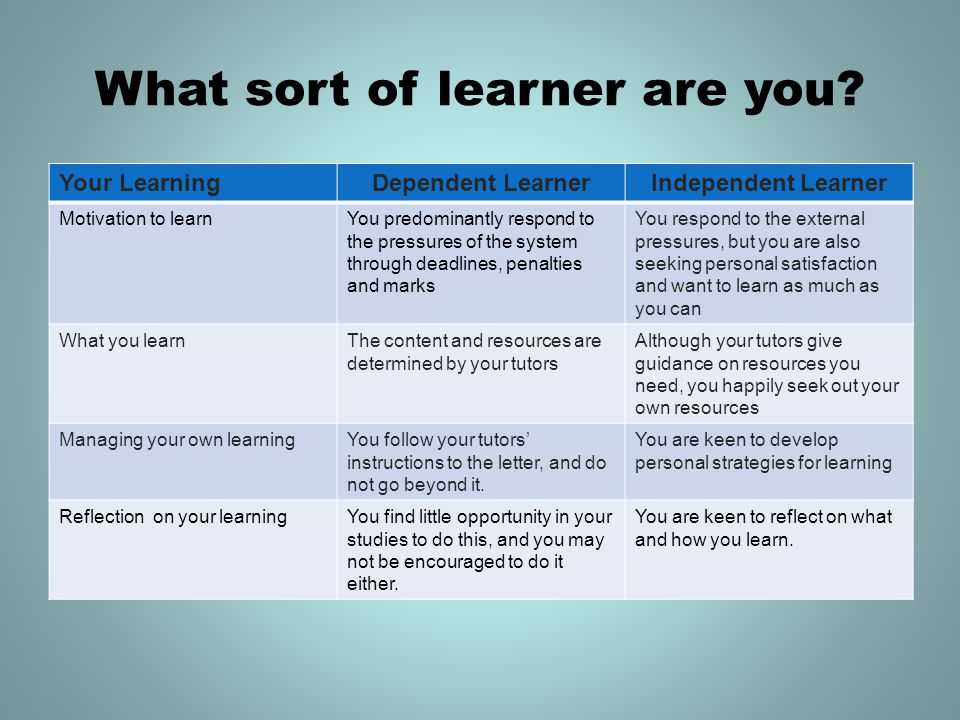
How to Remember Greater Than and Less Than Signs
Though the greater than and less than signs have clear meanings, they can be kind of hard to remember. All of them look similar, with the exception of the “does not equal” sign. So how can you remember them?
Alligator Method
One of the best ways to memorize the greater than and less than signs is to imagine them as little alligators (or crocodiles), with the numbers on either side representing a number of fish. The alligator always wants to eat the larger number of fish, so whatever number the mouth is open toward is the larger number.
The alligator’s mouth is open toward the 4, so even if we weren’t sure that 4 is a bigger number than 3, the > sign would tell us. All inequality signs give us the relationship between the first number and the second, beginning with the first number, so 4 > 3 translates to “4 is greater than 3.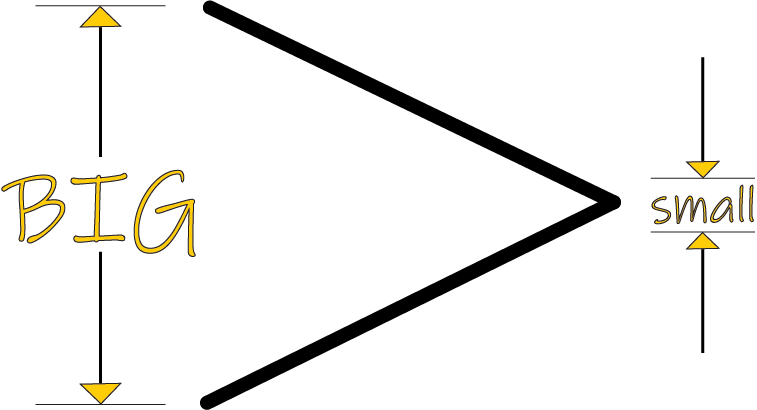
This also works the other way around. If you see 5 < 8, imagine the < sign as a little alligator mouth about to chomp down on some fish.
The mouth is pointed at the 8, which means that 8 is more than 5. The sign always tells us the relationship between the first number and the second, so 5 < 8 can be translated to “5 is less than 8.”
When you’re working with inequalities, you can even draw little eyes on the symbols to help you remember which means which. These can be tricky to remember, so don’t be afraid to get a little creative until you really have them memorized!
Rotate your less than sign a little bit and you get an L for «less than!»
L Method
This method is pretty simple—”less than” starts with a letter L, so the symbol that looks most like an L is the one that means “less than.”
< looks more like an L than >, so < means “less than.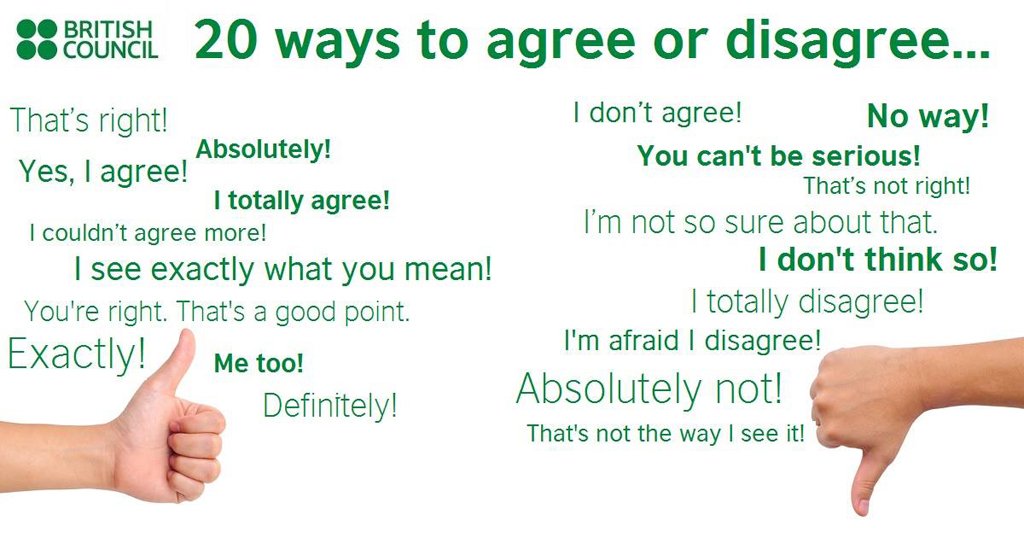
Equal Sign Method
Once you’ve mastered the Alligator or L method, the other symbols are easy! “Greater than or equal to” and “less than or equal to” are just the applicable symbol with half an equal sign under it. For example, 4 or 3 ≥ 1 shows us a greater sign over half an equal sign, meaning that 4 or 3 are greater than or equal to 1.
It works the other way, too. 1 ≤ 2 or 3 shows us a less than sign over half of an equal sign, so we know it means that 1 is less than or equal to 2 or 3.
The “does not equal” sign is even easier! It’s just an equal sign crossed out. If you see an equal sign crossed out, it means that the equal sign doesn’t apply—thus, 2 ≠ 3 means that 2 does not equal 3.
Keep these things in mind and you’ll look this happy about working with inequalities.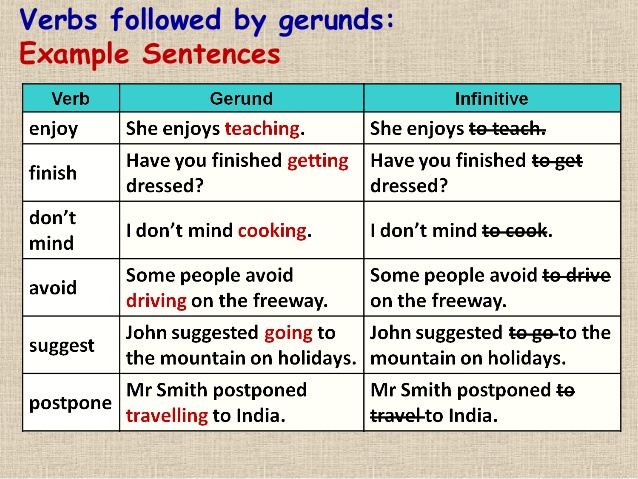
Key Tips For Working With Inequalities
Inequalities are tricky—we’re used to having a clear and concrete answer for math problems, but inequalities don’t always give us that. When you’re working with inequalities, keep these things in mind to help ease you through the process.
Inequalities are All About Relationships
Keep in mind as you’re working on inequalities that they’re typically asking you to solve for a relationship or to identify which symbol is appropriate rather than asking you to solve for a single number. You don’t need to end up with two numbers on either side of an equal sign to be right—the answer just needs to be true.
Isolate Your Variables
When you’re working with inequalities with variables, it’s important to remember that, in general, you’ll be trying to isolate the variable to one side or the other. Focus on condensing numbers and canceling things out when you can, always with the goal of getting the variable alone on either side of the equation.
Negative Numbers Change the Greater Than or Less Than Sign
Don’t forget that performing certain actions will flip the sign. When you multiply or divide by a negative number, you need to flip the “greater than” or “less than” sign along with it.
Don’t Multiply or Divide by a Variable—Most of the Time
Unless you know for certain that a variable will always be positive or always be negative, don’t multiply or divide an inequality by a variable.
What’s Next?
Inequalities aren’t the only tricky part of math—rational numbers can also be confusing! This guide will help walk you through what a rational number is and what they look like.
Ever wondered how many zeroes are in big numbers? How many zeroes are there in a billion? How about a trillion?
Need to get some practice in? These 5th-grade math games can help you hone your skills!
Need more help with this topic? Check out Tutorbase!
Our vetted tutor database includes a range of experienced educators who can help you polish an essay for English or explain how derivatives work for Calculus.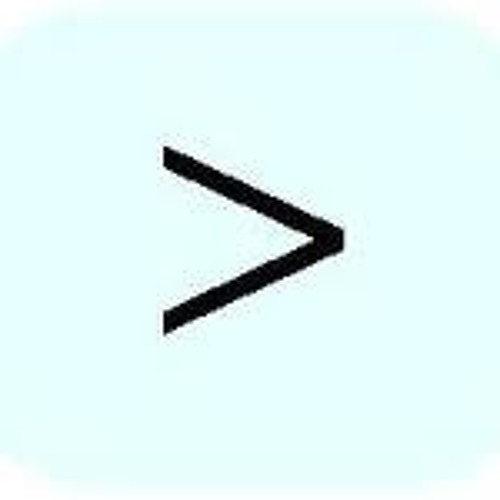
Have friends who also need help with test prep? Share this article!
Melissa Brinks
About the Author
Melissa Brinks graduated from the University of Washington in 2014 with a Bachelor’s in English with a creative writing emphasis. She has spent several years tutoring K-12 students in many subjects, including in SAT prep, to help them prepare for their college education.
Equal, Less and Greater Than Symbols
lo1kvxu-Dc8
As well as the familiar equals sign (=) it is also very useful to show if something is not equal to (≠) greater than
(>) or less than (<)
These are the important signs to know:
| = |
When two values are equal |
example: 2+2 = 4 |
| ≠ |
When two values are definitely not equal |
example: 2+2 ≠ 9 |
| < |
When one value is smaller than another |
example: 3 < 5 |
| > |
When one value is bigger than another |
example: 9 > 6 |
Less Than and Greater Than
The «less than» sign and the «greater than» sign look like a «V» on its side, don’t they?
To remember which way around the «<» and «>» signs go, just remember:
- BIG > small
- small < BIG
The «small» end always points to the smaller number, like this:
Greater Than Symbol: BIG > small
Example:
10 > 5
«10 is greater than 5″
Or the other way around:
5 < 10
«5 is less than 10″
Do you see how the symbol «points at» the smaller value?
.

Sometimes we know a value is smaller, but may also be equal to!
Example, a jug can hold up to 4 cups of water.
So how much water is in it?
It could be 4 cups or it could be less than 4 cups: So until we measure it, all we can say is «less than or equal to» 4 cups.
To show this, we add an extra line at the bottom of the «less than» or «greater than» symbol like this:
|
The «less than or equal to» sign: |
≤ | |
|
The «greater than or equal to» sign: |
≥ |
All The Symbols
Here is a summary of all the symbols:
|
Symbol |
Words |
Example Use |
|---|---|---|
|
= |
equals |
1 + 1 = 2 |
|
≠ |
not equal to |
1 + 1 ≠ 1 |
|
> |
greater than |
5 > 2 |
|
< |
less than |
7 < 9 |
|
≥ |
greater than or equal to |
marbles ≥ 1 |
|
≤ |
less than or equal to |
dogs ≤ 3 |
Why Use Them?
Because there are things we do not know exactly .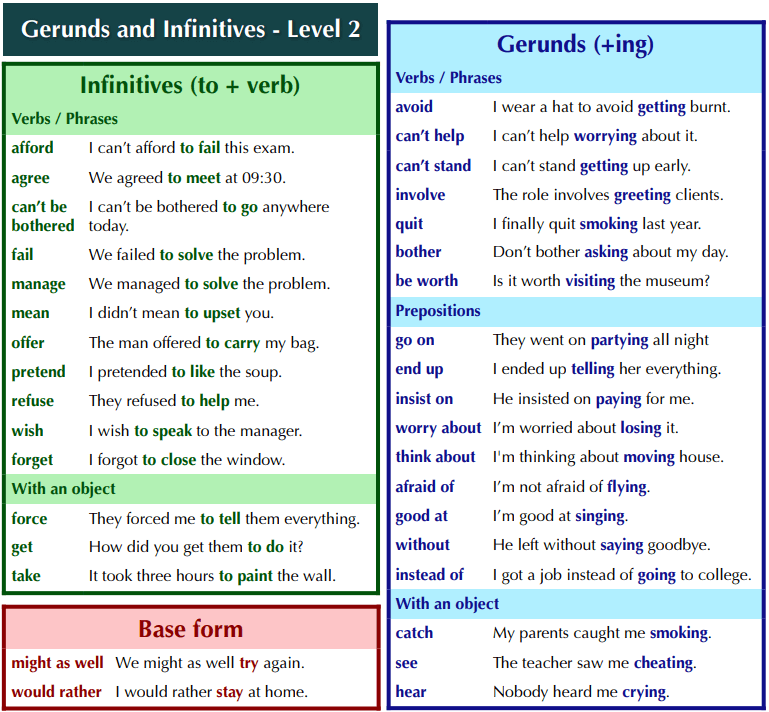
… but can still say something about.
So we have ways of saying what we do know (which may be useful!)
Example: John had 10 marbles, but lost some. How many has he now?
Answer: He must have less than 10:
Marbles < 10
If John still has some marbles we can also say he has greater than zero marbles:
Marbles > 0
But if we thought John could have lost all his marbles we would say
Marbles ≥ 0
In other words, the number of marbles is greater than or equal to zero.
Combining
We can sometimes say two (or more) things on the one line:
Example: Becky starts with $10, buys something and says «I got change, too». How much did she spend?
Answer: Something greater than $0 and less than $10 (but NOT $0 or $10):
«What Becky Spends» > $0
«What Becky Spends» < $10
This can be written down in just one line:
$0 < «What Becky Spends» < $10
That says that $0 is less than «What Becky Spends» (in other words «What Becky Spends» is greater than $0) and what Becky Spends is also less than $10.
Notice that «>» was flipped over to «<» when we put it before what Becky spends. Always make sure
the small end points to the small value.
Changing Sides
We saw in that previous example that when we change sides we flipped the symbol as well.
| This: | Becky Spends > $0 | (Becky spends greater than $0) | ||
| is the same as this: | $0 < Becky Spends | ($0 is less than what Becky spends) |
Just make sure the small end points to the small value!
Here is another example using «≥» and «≤»:
Example: Becky has $10 and she is going shopping. How much will she
spend (without using credit)?
Answer: Something greater than, or possibly equal to, $0 and less than, or possibly equal to, $10:
Becky Spends ≥ $0
Becky Spends ≤ $10
This can be written down in just one line:
$0 ≤ Becky Spends ≤ $10
A Long Example: Cutting Rope
Here is an interesting example I thought of:
Example: Sam cuts a 10m rope into two.
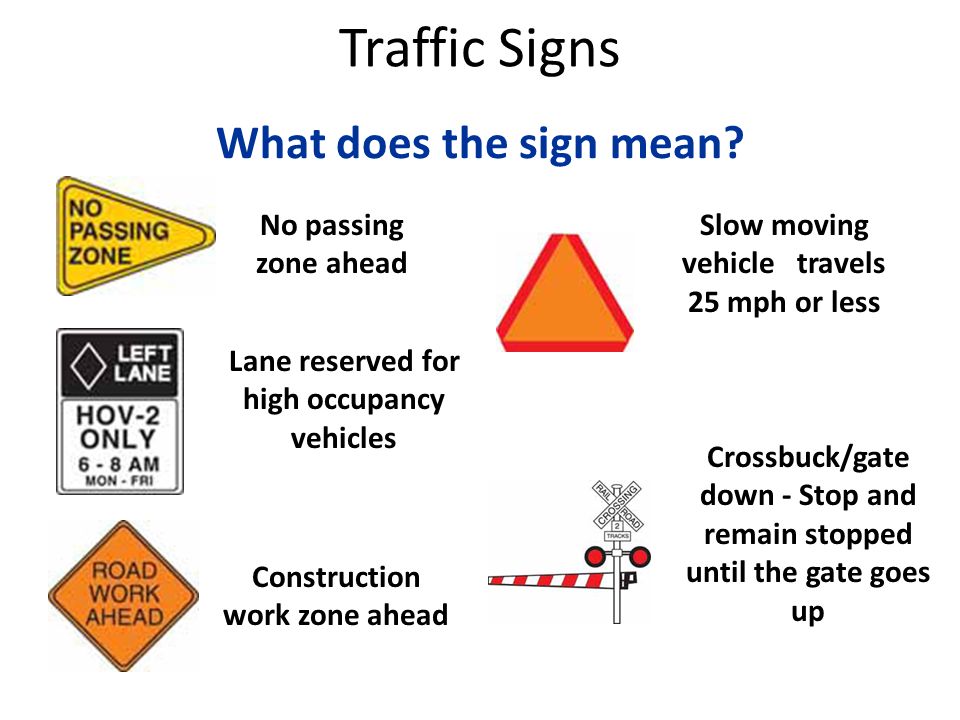
Answer: Let us call the longer length of rope «L«, and the shorter length «S«
L must be greater than 0m (otherwise it isn’t a piece of rope), and also less than 10m:
L > 0
L < 10
So:
0 < L < 10
That says that L (the Longer length of rope) is between 0 and 10 (but not 0 or 10)
The same thing can be said about the shorter length «S«:
0 < S < 10
But I did say there was a «shorter» and «longer» length, so we also know:
S < L
(Do you see how neat mathematics is? Instead of saying «the shorter length is less than the longer length», we can just write «S < L«)
We can combine all of that like this:
0 < S < L < 10
That says a lot:
0 is less that the short length, the short length is less than the long length, the long length is less than 10.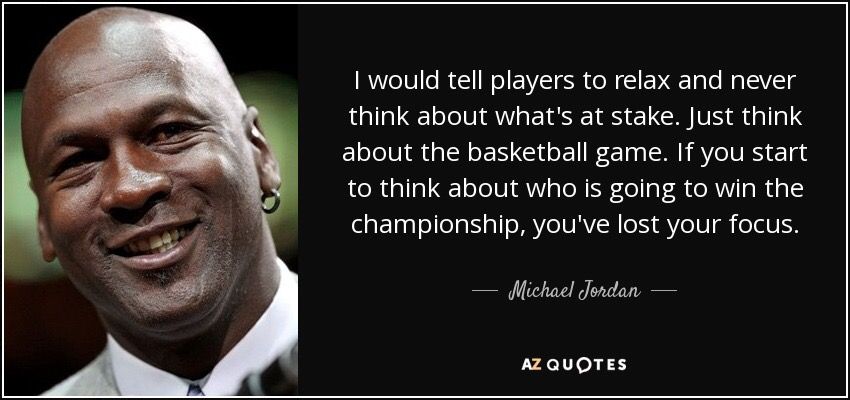
Reading «backwards» we can also see:
10 is greater than the long length, the long length is greater than the short length, the short length is greater than 0.
It also lets us see that «S» is less than 10 (by «jumping over» the «L»), and even that 0<10 (which we know anyway), all in one statement.
NOW, I have one more trick. If Sam tried really hard he might be able to cut the rope EXACTLY in half, so each half is 5m, but we know he didn’t because we said there was a «shorter» and «longer» length, so we also know:
S<5
and
L>5
We can put that into our very neat statement here:
0 < S < 5 < L < 10
And IF we thought the two lengths MIGHT be exactly 5 we could change that to
0 < S ≤ 5 ≤ L < 10
An Example Using Algebra
OK, this example may be complicated if you don’t know Algebra, but I thought you might like to see it anyway:
Example: What is x+3, when we know that x is greater than 11?
If x > 11 , then x+3 > 14
(Imagine that «x» is the number of people at your party.
5250, 5251, 5252, 5253, 5254, 5255, 5256, 5257, 5258, 5259
Greater Than and Less Than Sign
Inequalities
Early in your mathematical learning, you learned about equations like 3 + 2 = 5. The equal symbol “=” is indicating that everything to the left of the symbol is the same value as everything to the right of the symbol. When you are solving equations you are finding what should be on the other side of the equal side to make it true. There are many other symbols that compare values. Let’s explore them out!
Greater Than and Less Than
One of the symbols is the greater than symbol as shown below “>”
This symbol says that the value to the right of the symbol is larger than the value to the right of the symbol.
A similar symbol is the less than symbol “<”
This symbol says that the value to the left of the symbol is smaller than the value to the right of the symbol.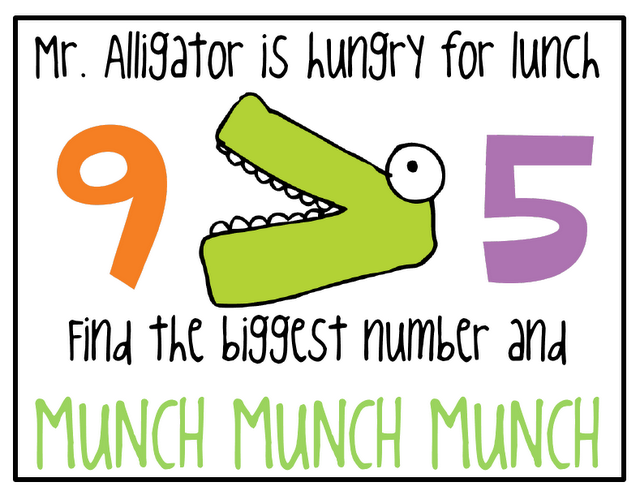
Using The Symbols
The greater than and less than symbols are also known as inequality symbols. Inequality means not equal. These symbols are great when comparing two values that may not be equal. This can be any number of things, books read, age, height, the number of pets you have. Let’s look at some examples.
Mary is older than Joey.
We do not know how old either mary or Joey is, but we know that Mary is older. This means that her age is bigger than Joey’s age. We can show this with a greater than symbol.
Mary’s age > Joey’s age
We can also flip this around. We know that Joey’s age is smaller, or less than, Mary’s age. So we can also use the less than symbol.
Joey’s age < Mary’s age
Understanding the Symbols
These symbols look very similar. How do you know which one to use? There are a few different ways to help understand the symbols better and know which on to use.
Looking at the symbols left side, you see the bigger part first. Bigger means greater. This is the symbol for greater than.
Notice that the smaller portion is what you see first. Smaller means less. This symbol is the less than symbol. Another trick for the less than symbol is that the symbol “ < “ looks similar to the letter “L”. Less than also starts with the letter “L”. How neat!
Another useful method is known as the alligator method. This method can seem more for the younger student, but it is one of the more helpful methods to know how to draw in the symbol you need. Imagine the symbol as a hungry alligator. It always wants to eat the bigger portion.
If you have two numbers to compare, 12 and 45 you have the alligator eat the bigger number.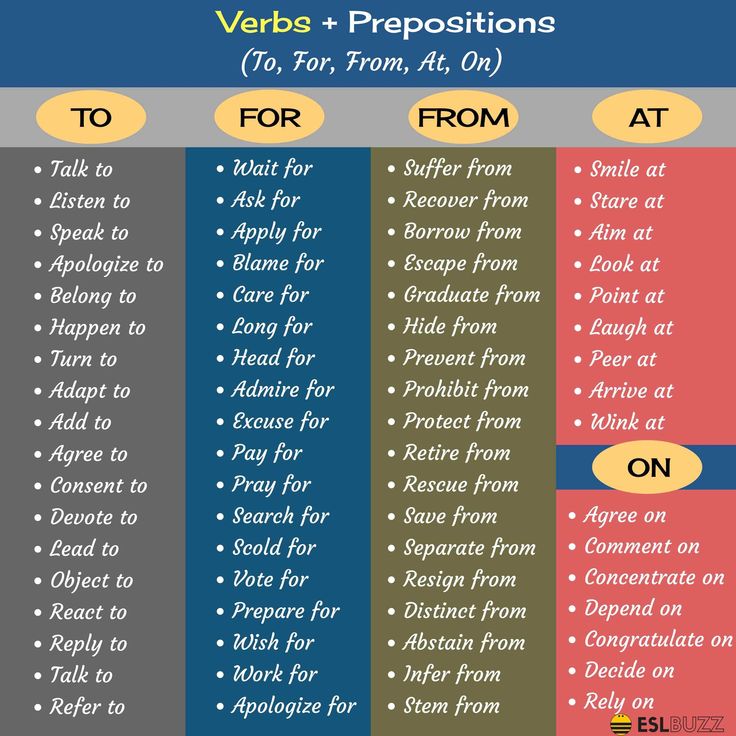
12 ? 45 or 45 ? 12
12 < 45 or 45 > 12
Or Equal To
What if the values can be equal to? This is where the “less than or equal to” symbol, ” ≤ “, and “greater than or equal to” symbol, ” ≥ “, come into play.
Less Than Or Equal To
Imagine a pitcher of juice. The pitcher can hold 12 cups of juice. How much juice is in the pitcher? If it is filled up to the top it has 12 cups in it. As people drink the juice the amount goes down. We can say that the pitcher has no more than 12 cups of juice. This can be written using the symbols:
juice ≤ 12 cups
If more than 12 cups are poured into the pitcher it overflows so the amount can’t be more than 12. The pitcher as no more than 12 cups of juice.
The phrases “no more than” and “no more than” are often used with the less than or equal to symbol.
Can you think of other situations that the less than or equal to symbol can be used?
Greater Than Or Equal To
If you have ever been on a roller coaster ride or been to an amusement park you may have seen a sign that said “You must be at least 4 feet tall to ride this ride”. Using the symbols it would look like this:
Height ≥ 4 ft
If you are 4 feet tall you can ride the ride and if you are taller you may ride. If you are shorter, or less than 4 feet tall you are not allowed to ride. Maybe next year.
The phrase “at least” is commonly used when working with greater than or equal to.
What About Zero?
As you learn about inequality symbols you often use one at a time. However, you can use more than one symbol to indicate a range. We can use the previous examples to show this. Remember that pitcher that hols 12 cups of juice? We know that 12 cups is the greatest amount it can hold, but what is the least amount? It can have no juice in the pitcher.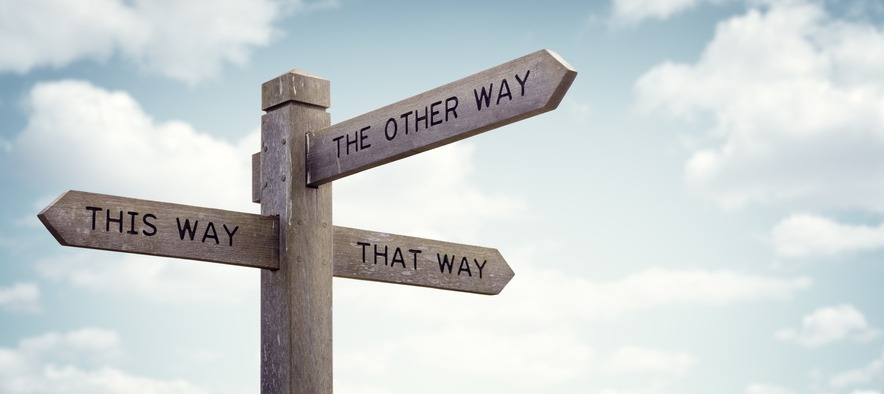
0 cups ≤ amount of juice ≤ 12 cups
Combining Symbols
There are many different situations in which a range of values would be acceptable. This would mean that there would be a need to use two symbols.
Jeff has $20 in his pocket and wants to buy a present for his sister. He needs to make sure that he has $2 left over to pay back his friend. How much money can he spend on the gift?
When working with inequality symbols and problems, it may be helpful to think about the biggest value and the smallest value. He has $20, but still owe his friend $2. That means he only has $18 to really spend. That is the largest value. Jeff can spend $18 or less than $18.
Amount spent ≤ $18
What is the smallest amount that he can spend? Jeff doesn’t need to spend any money at all! He can make a gift and spend no money at all.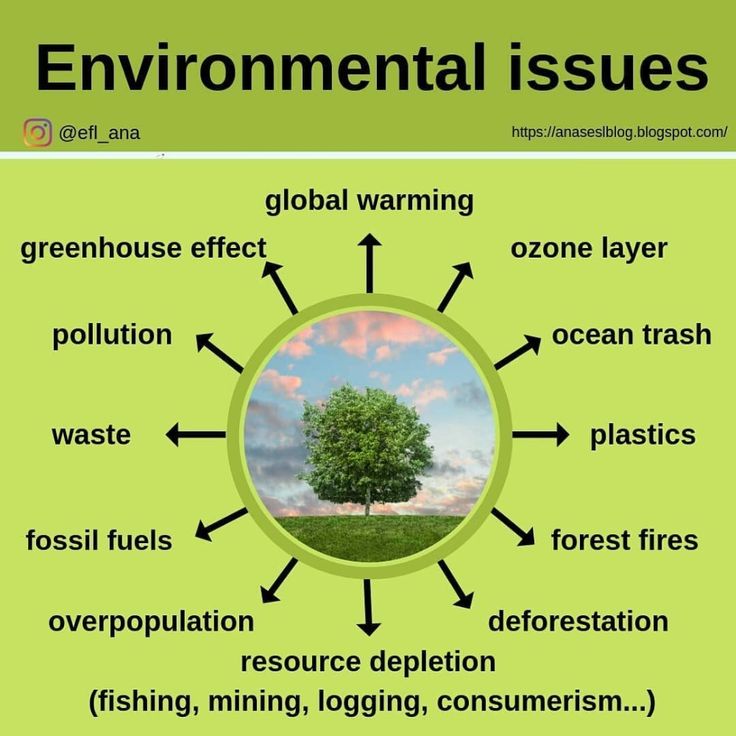
Amount spent ≥ $0
Now that we have two statements how do we combine them? We will rewrite the first statement we made. Next look at the opening for the zero money spent. It is opened towards the words. When we put the zero on the left side we want to make sure the symbol is still opening towards the words “amount spent”
$0 ≤ Amount spent ≤ $18
Graphs
You can also visualize a numberline to help organize the symbols, it fact, number lines are used to graph inequalities and have a visual representation of the symbols. Let’s use the previous examples to show a visualization and graphs of the situations.
Height ≥ 4 ft
When graphing you want to start on a numberline. With this example we want to start at the 4. A circle is placed at the four indicating that this is where the values that make this statement true are. Since 4 also makes it true we fill in the circle to make is solid.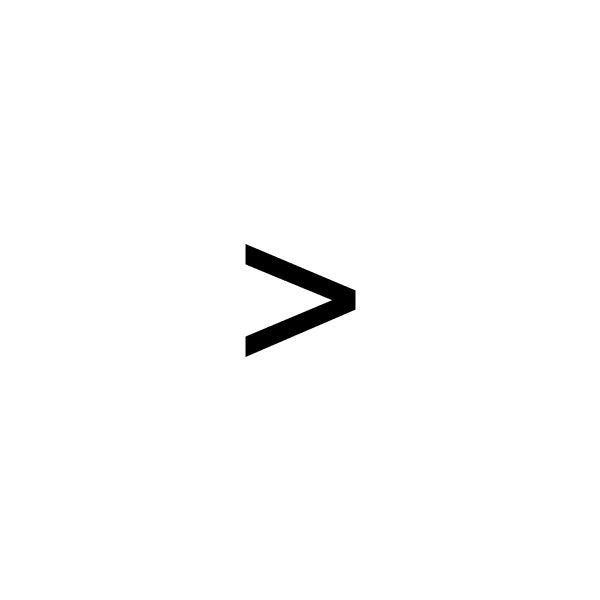
Next we want to shade in the direction of the true answers. Greater than means bigger, so we want to shade the numbers larger than 4.
You can always test out numbers to find out where to shade as well. Does 3 or 5 make the statement true?
3 ≥4 5 ≥ 4
False True
Make sure that the 5 is shaded.
Now let’s look at an example that has two symbols. Remember that pitcher of juice?
0 cups ≤ amount of juice ≤ 12 cups
Since there are two values we want to start with those. Create a numberline. Put circles around the smallest value, zero, and the largest value, 12. Since the symbols are also equal to, we can fill in the circles.
Now we want to find the values that make this statement true. Look at the values to the left and right of both circles. Can the pitcher have a negative amount of juice? Nope. can the pitcher have 13 cups of juice? No, it will overflow.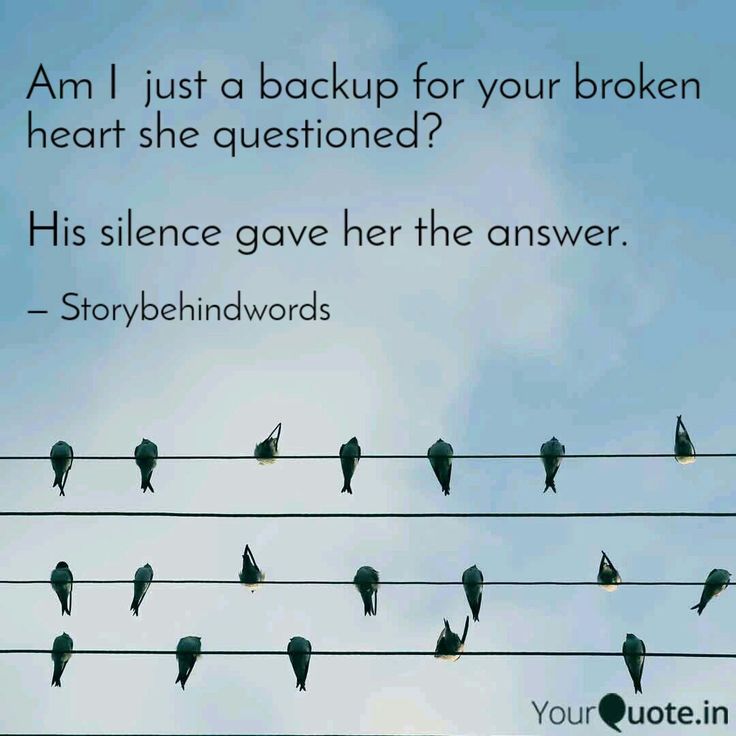
These examples both had equal to as part of their symbols. If the symbol is just greater than or less than, the circles are open. An open circle indicates that the number that is circled does not make the statement true.
x < 14
Not Equal To
The last symbol that we are going to discuss is not equal to, ≠ . just like the name says, the value on the left side of the symbol is not the same as the value on the right side of the symbol.
3 ≠ 4
This symbol is used to show when an answer is not correct, or the value can be anything other than one number.
2 + 3 ≠ 6 number of pets ≠ 4
Practice
Practice Question 1
Are the following inequalities True or False?
- 3 > 7
- -4 ≤ -2
- 4 + 5 > 16 ÷ 2
Practice Question 2
Which of the following values makes the statement true?
23.
11 23 23.4 23.8 26
Practice Question 3
Draw in the symbol that makes the statement true.
Practice Question 4
Write the two inequalities that can be created depending on how the graph is shaded.
Algebra Examples
Practice Question 5
Solve
x + 2 < 7
Practice Question 6
Solve
2x – 4 ≥ 8
Practice Question 7
Solve and give two correct values for x
3x + 7 ≤ 22
Did you Know?
- The signs for greater than (>) and less than (<) were introduced in 1631 in “Artis Analyticae Praxis ad Aequationes Algebraicas Resolvendas” which was written by Thomas Harriot.
- There are also other symbols such as ~ (similar to), ≅ (congruent to), and ≈ (approximately equal to)
- You can use inequalities to graph on a coordinate plan and find multiple solutions in a two dimensional space!
Frequently Asked Questions
What are the different symbols?
| Symbol | Meaning | Example |
| < | Less than | 4 < 3 |
| > | Greater than | 7 > 2 |
| = | Equal to | 2 = 2 |
| ≥ | Greater than or equal to | 5 ≥ -6 |
| ≤ | Less than or equal to | -1 ≤ 8 |
| ≠ | Not equal to | 3 ≠ -3 |
How do I know which symbol to use?
There are a few methods to know which symbol to use.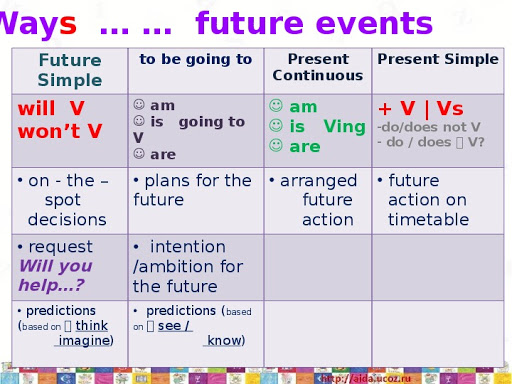
What does the line under the symbol mean?
The line under the symbol is indicating that the values may also be equal. You can have less than or equal to as well as greater than or equal to.
| ≥ | Greater than or equal to |
| ≤ | Less than or equal to |
Can you use the symbols with any numbers?
Yes! You can use the symbols to compare whole numbers,negatives, decimals or fractions. They are even used with variables.
Can the symbol be flipped?
Yes. If you are comparing two numbers, let’s say 12 and 41 you can write it two different ways.
You can say that 12 is less than 41. 12 < 41
You can say that 41 is greater than 12.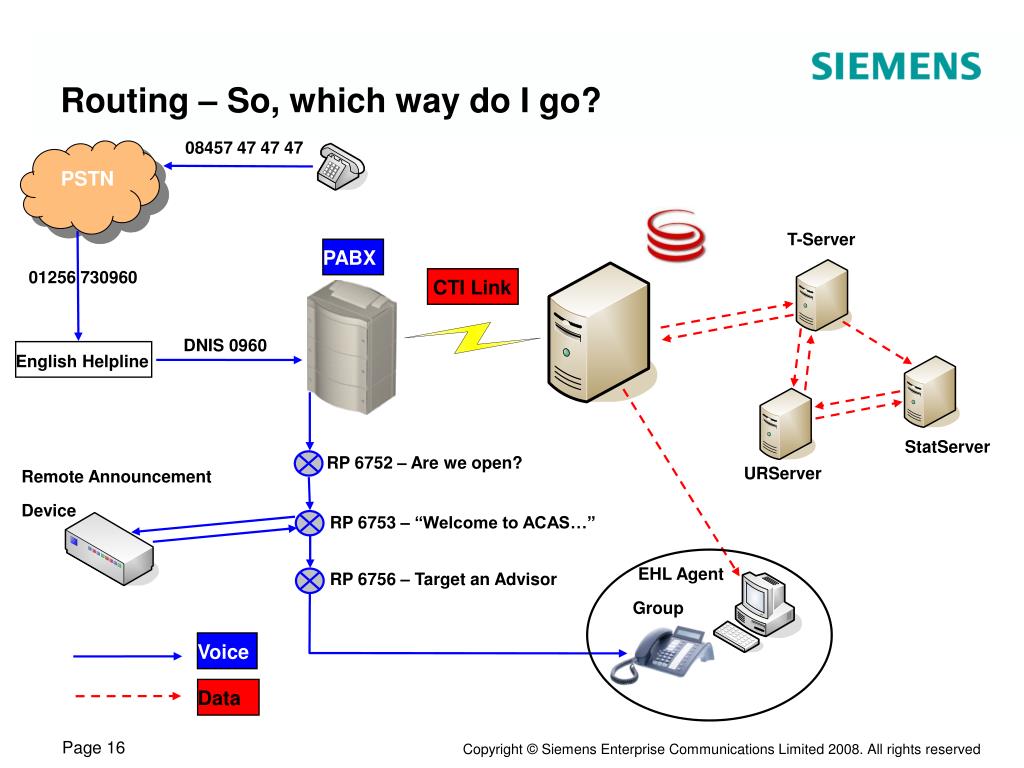
Depending on the order of the numbers and how you compare them you can use either symbol to compare the same numbers!
What is the difference between an open circle and a closed circle?
The type of circle on a graph is telling you if that number makes the statement true. A closed circle indicates that the number is a true value. An open circle says that the number is not a true value.
A closed circle is represented by the greater than or equal to symbol, “≥“, or the less than or equal to symbol, “≤“.
An open circle is represented by the greater than symbol “>“, or the less than symbol, “<“.
How do you know where to shade?
When creating a graph you want to shade the answers that make the statement true. Test the numbers that are to the left and right of the circled number by substituting it into the inequality. If the statement is true, that is the direction to shade.
If there are two inequalities in the statement, the shading will often be between the two numbers or in opposite directions. The same test can be conducted to find where to shade. Test numbers that are to the right and left of the circles. To save some time you will only need to check one number that is between the circles.
If a number makes both inequalities true then you will shade in between the circles. If a number makes only one of the inequality true you will be shadeding in opposite directions.
Greater Than Sign in Math
Introduction
Inequality between two values, quantities, or numbers, where one is more than the others is what we mean by greater than in Math. In other words, when A is more in comparison to B, we express it as A is greater than B.
What Is the Symbol of Greater Than?
The symbol of greater than is ‘>’. Let us understand greater than sign with examples given below:
The symbol looks like an alligator’s mouth open in front of the bigger number or quantity.
The alligator method is the best way to help young learners retain the usage of the more than sign. To enable them to have a firm grip over the concept, parents and teachers can indulge in fun activities like creating its symbol in an alligator’s mouth and have kids place them between two quantities shown to them.
Another concept used in this regard is less-than. Less than also compares two values, quantities, or numbers. The difference is that here, one is less than the other. As per the above example, where A is more than B, we can also say that B is less than A. The symbol of less than is <.
Let us take part in a short activity to understand the greater than and less than signs
Step 1: Create a mouth with your left and right hands, as shown below.
Alt Tag: Usage of hands to create comparison symbols
Step 2: Observe one hand at a time.
The right hand creates a greater-than sign while the left hand creates a less-than sign. If you ever get confused, remember that your right hand is the greater-than alligator, and your left hand is the less-than alligator.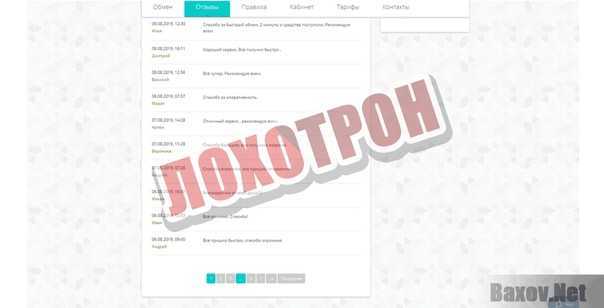
For example, the teacher displays a big box of candies on one side, a handful on the other, and then asks a student to place the greater-than sign between the two displayed quantities. Participating in such activities can interest your ward more than mundane worksheets, facilitating better learning.
Parents and guardians can come up with other such activities to interest their young learners and help them grasp concepts better. Using everyday objects to compare their quantities is also a great way to impart the basics of the concept of greater and less.
Difference Between Greater Than and Greater Than or Equal To
Solved Examples
Let us look at some of these solved examples to understand them better.
Example 1: Use the correct sign (< , >) in the following.
i.
Solution: <
< is the correct sign because 5 is greater than 4, and the open mouth faces the bigger number. Thus, the open mouth faces the side with 5 stars, and the closed end faces the smaller number.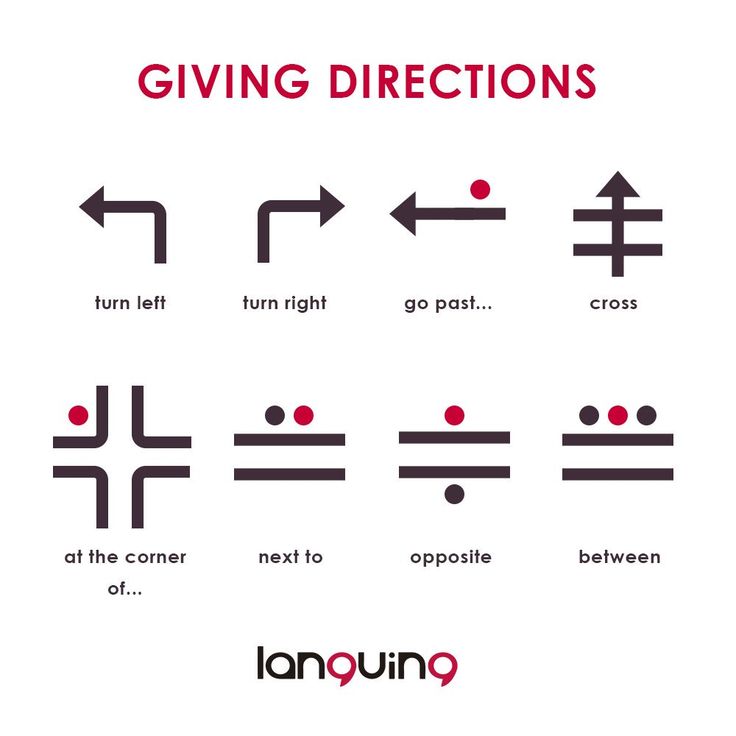
ii.
Solution: >
> is the correct sign because 6 is greater than 5, and the open mouth faces the bigger number. Thus, the open mouth of the symbol faces the 6 pairs of cherries, which is greater than the side with 5 pairs of cherries.
iii.
Solution: <
< is the correct sign because 8 is greater than 6 and the open mouth of the symbol faces the side with the bigger number. Thus, the open mouth faces the side with 8 suns since the other side has fewer suns.
Example 2: Use the correct sign (< , >) in the following.
Solution: <
< is the correct sign because 6 is greater than 4 and the open mouth of the symbol faces the bigger number. Thus, the open mouth faces the side with 6 lollipops since the other side has fewer lollipops.
Example 3: Draw the alligator’s mouth facing the bigger number.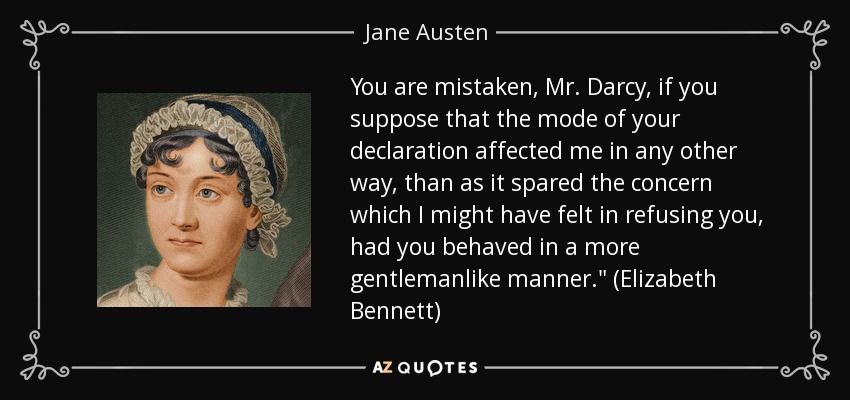
i.
ii.
Solution:
i. >
ii. <
Since the mouth of the alligator opens toward the bigger number, the answer to (i) is > because 15 is > 11, and the answer to (ii) is < because 64 is greater than 46.
Practice Problems
It is brainstorm o’clock, Junior!
$>$
$\lt$
$=$
None of the above
Correct answer is: $>$
> is the correct sign because 7 is greater than 6 and the open mouth of the symbol faces the bigger number. Thus, the open mouth faces the side with 7 umbrellas since the other side has fewer umbrellas.
$\lt$
$\gt$
=
None of the above
Correct answer is: $\lt$
$\lt$ is the correct sign because 4 is greater than 3 and the open mouth of the symbol faces the bigger number. Thus, the open mouth faces the side with 4 ice creams since the other side has fewer ice creams.
$\lt$
$\gt$
None of the above
=
Correct answer is: $\lt$
81 is less than 89
$\lt$
$\gt$
None of the above
=
Correct answer is: $\gt$
50 is greater than 49
$\lt$
$\gt$
None of the above
=
Correct answer is: $\lt$
The mouth of the alligator opens towards the bigger number.
Thus, it opens towards 89 since 89 $\gt$ 81; it opens towards 50 since 50 $\gt$ 49; it opens towards 24 since 24 $\gt$ 18.
Yes
No
Correct answer is: No
The above is not true because the open mouth of the sign faces 19, which is not the bigger number.
Since 42 $>$ 19, the open mouth should face 42.
Frequently Asked Questions
Why is the greater-than sign compared to the mouth of the alligator?
The greater-than sign is often compared to an alligator’s mouth as it resembles and makes the learning process fun. This alligator always faces the mouth wide open towards the greater number.
What is the difference between greater than and greater than equal to?
Greater than means that the variable or number is more than the given limit. On the other hand, greater than or equal to states that the number or variable is either equal to or more than the given limit. The greater-than symbol is represented as >, whereas the greater than or equal to sign is represented as ≥.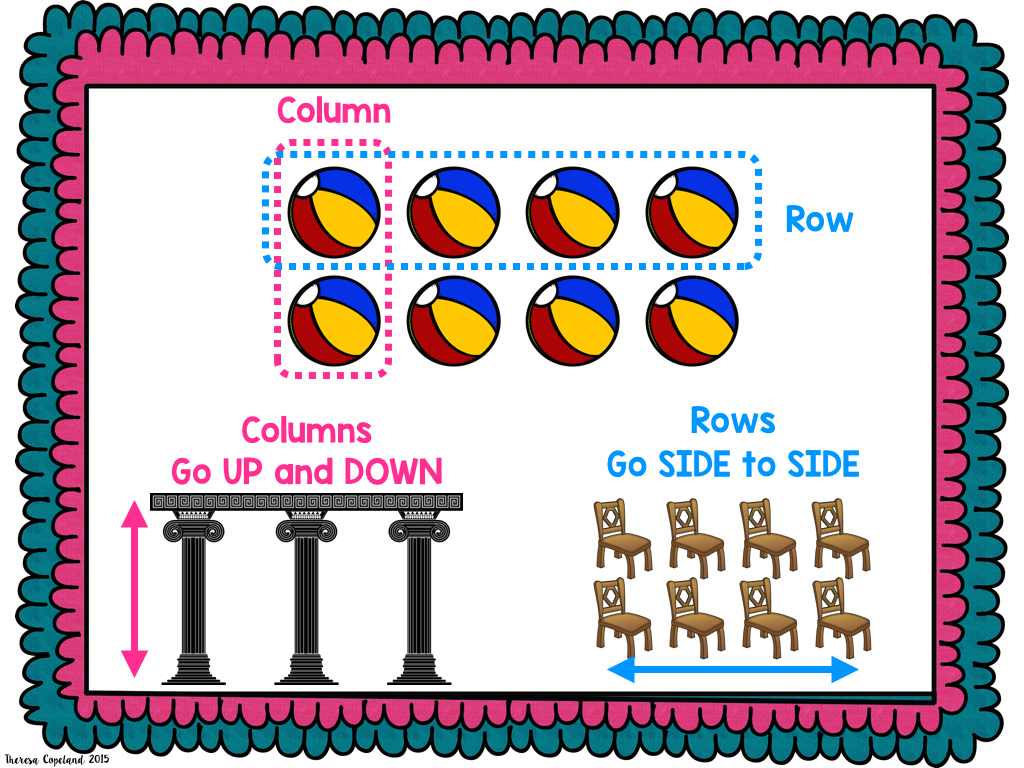
Which sign is the opposite of the greater-than sign?
The less-than sign is the opposite of the greater-than sign and is denoted by the symbol <. In the case of less than, the closed end of the symbol faces a smaller number. For example, 18 < 21 expressed as 18 is less than 21.
Greater than or Equal to
LearnPracticeDownload
The greater than or equal to symbol is used to represent inequality in math. It tells us that the given variable is either greater than or equal to a particular value. For example, if x ≥ 3 is given, it means that x is either greater than or equal to 3. It defines a range of values that x can take which starts from 3 and goes up till infinity.
| 1. | What does Greater Than or Equal to Mean? |
| 2. | Greater Than or Equal to Symbol |
| 3. | Greater Than or Equal to Application |
4.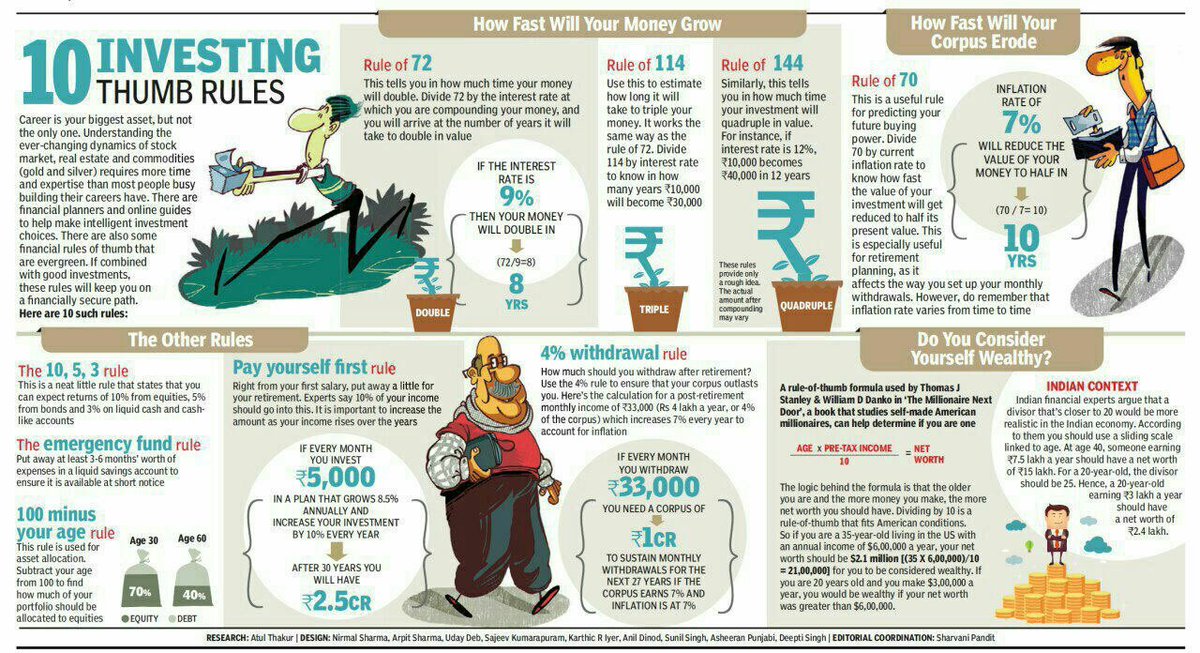 |
FAQs on Greater Than or Equal to |
What Does Greater Than or Equal to Mean?
‘Greater than or equal to’, as the name suggests, means the variable is either greater than or equal to a particular value. The term ‘greater than’ is used to express that one quantity is greater than the other quantity. The term ‘is equal to’ is used to express that two quantities are equal. When these terms are combined with each other they make a new term that is Greater Than Or Equal To and this term is used to show that, the quantity or amount value limit could be equal to or greater than the given limit.
For example, for a person to be elected as president he or she should be a minimum of 35 years old. This means that a person should be either greater than or equal to 35 years old.
Greater Than or Equal to Symbol
The ‘Greater than or equal to’ symbol is used in linear inequalities when we do not know whether the value of a variable is greater than or equal to a particular value.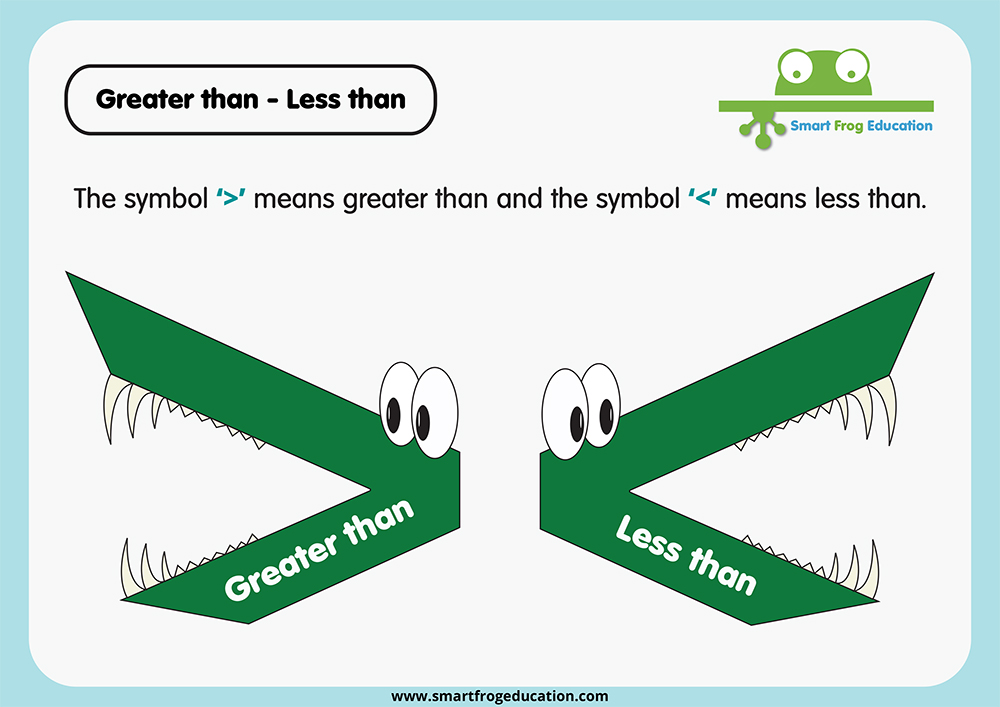
Here are a few examples for ‘Greater than or equal to’.
- x ≥ 100 means the value of x should be greater than or equal to 100.
- a ≥ — 2 means the value of ‘a’ should be greater than or equal to -2.
Greater Than or Equal to Application
The ‘Greater than or equal to’ symbol is used in mathematics to express the relationship between 2 expressions. The following table shows where and how the ‘greater than or equal to’ symbol is used along with examples and meanings.
| Symbol | Example | Meaning |
|---|---|---|
| Greater than or equal to, ≥ |
x ≥ 2
2 ≥ x ≥ −1
|
The value of x is greater than or equal to 2.
The value of x is between -1 and 2 inclusive of both values.
|
☛Related Articles
- Comparing and Ordering
- Greater Than Calculator
- How To Make a Greater Than or Equal to Sign
- Less Than or Equal To
Greater Than or Equal to Examples
-
Example 1: If the value of x is greater than or equal to 9, how will this be shown in an expression?
Solution:
The statement says that the value of x is greater than or equal to 9. So this can be expressed as, x ≥ 9
-
Example 2: State true or false:
a.) If the value of ‘a’ is greater than or equal to 10, this can be expressed as, a ≥ 10
b.) 6 ≥ x ≥ -1 means that the value of x is between -1 and 6 inclusive of both values.
Solution:
a.) True, if the value of ‘a’ is greater than or equal to 10, this can be expressed as, a ≥ 10
b.
) True, 6 ≥ x ≥ -1 means that the value of x is between -1 and 6 inclusive of both values.
-
Example 3: What does the following expression mean? x ≥ 3 where x ∈ N?
Solution: We know that N is the symbol for the set of natural numbers like 1, 2, 3, 4, and so on
It is given that x ≥ 3 and x ∈ N
This means that x is a natural number that is greater than or equal to 3.
go to slidego to slidego to slide
Have questions on basic mathematical concepts?
Become a problem-solving champ using logic, not rules. Learn the why behind math with our certified experts
Book a Free Trial Class
Practice Questions on Greater Than or Equal To
go to slidego to slide
FAQs on Greater Than or Equal to
What is Greater Than or Equal to in Math?
Greater than or equal to, as the name suggests, means something is either greater than or equal to some quantity.
What is the Symbol for Greater Than or Equal to?
The symbol of ‘greater than or equal to’ looks like ‘≥ ‘. The open side of the symbol should be in front of the bigger value. The line below the symbol shows that the value could be equal to or more than the limit. For example, x ≥ 5.
Here, the value of x should either equal to or more than 5.
How do you Explain Greater Than or Equal to?
Greater than or equal to is something either greater than or equal to a given quantity. For example, if a florist earns $5 or more than $5 in a day, then it can be either $5, or more than $5. Now, if we assume the earning to be x, then this can be expressed as x ≥ $5.
What is the Difference Between Greater Than and Greater Than or Equal to?
The greater than symbol is written as > whereas the greater than or equal to is represented as ≥.
What is the Difference Between Greater Than or Equal to and Less Than or Equal to?
The ‘greater than or equal to’ sign tells that the amount is either more than or equal to the minimum limit whereas the ‘less than or equal to’ sign is just the opposite of this sign. Less than or equal to means, the amount is equal to or less than the maximum limit.
What is the Difference Between Greater Than or Equal to and Equal to?
The ‘Greater than or equal to’ ( ≥) symbol signifies that the value is either more than or equal to the given limit; whereas the equal to (=) symbol means the quantity is fixed. It is neither less than nor greater than the given value, it is exactly equal to the value.
Is 4 Greater Than or Equal to 3?
No, we cannot say that 4 is greater than or equal to 3.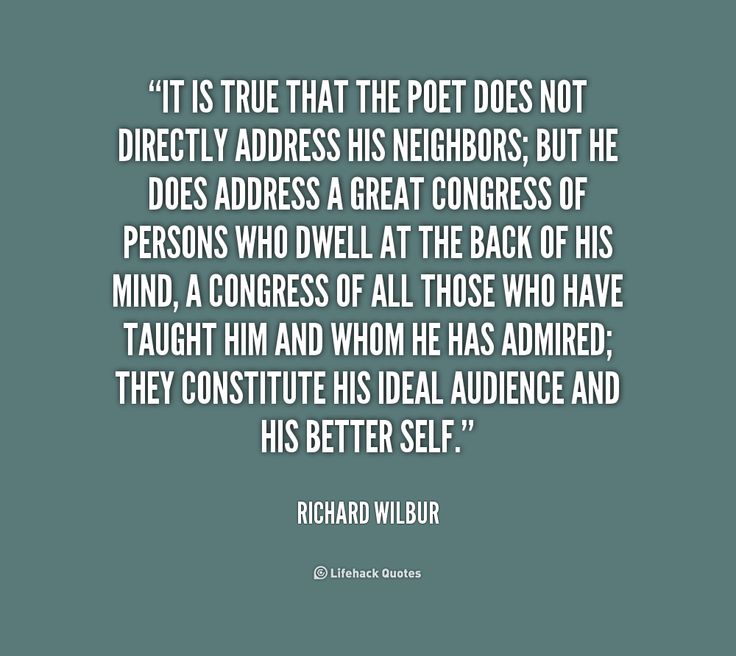
What is the use of Greater Than or Equal to?
Greater than or equal to is used to show that one variable is greater than or equal to a given quantity. For example, if a company has a policy to launch the product either at the same price or more than the old price. It can be said that the new product price is greater than or equal to the old price.
What is the Solution to 3x + 2.4 Greater than or Equal to 3.0?
In order to solve this inequality, we need to write it in the form of a mathematical expression, that is, 3x + 2.4 ≥ 3.0. After this, we can solve for the value of x and we get the result as follows.
3x + 2.4 ≥ 3.0
3x ≥ 3.0 — 2.4
3x ≥ 0.6
x ≥ 0.2
This means the value of x is greater than or equal to 0.2
Download FREE Study Materials
Greater Than Less Than Worksheet
Math worksheets and
visual curriculum
Greater Than — Symbol, Examples, Meaning
LearnPracticeDownload
Greater than is a mathematical term used to compare two quantities and help to establish a relationship between two where one term is greater than the other term.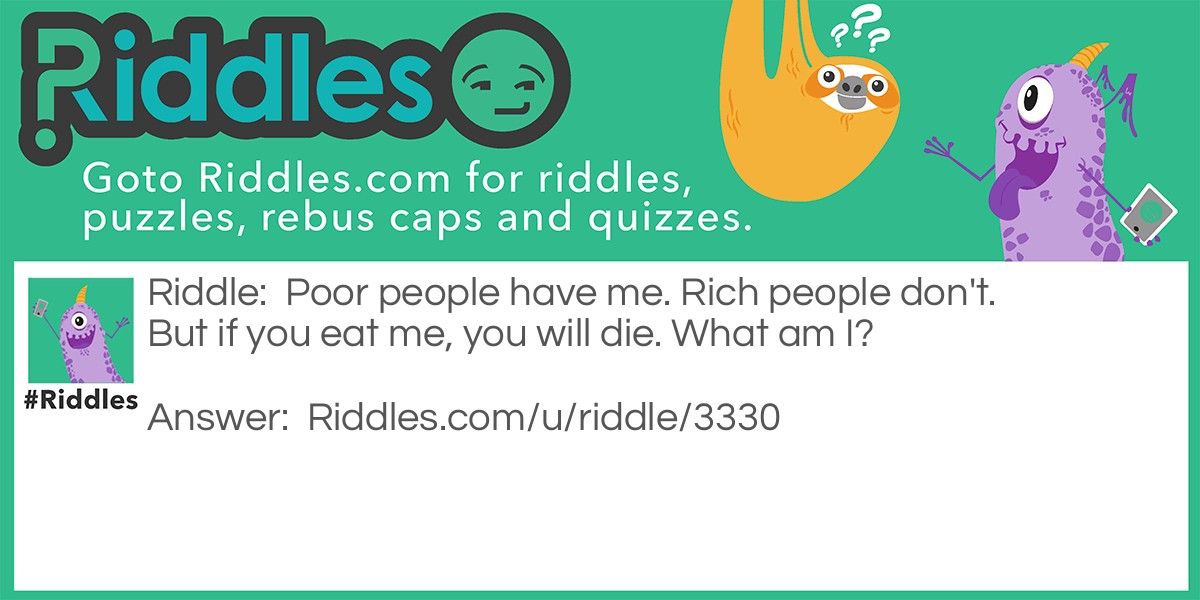
| 1. | What is Greater Than? |
| 2. | Greater Than Sign |
| 3. | FAQs on Greater Than |
What is Greater Than?
The term ‘greater than’ is used when a number is larger than the other number. Even to compare the two weights, greater than is used. For example, Joe goes to an ice-cream parlor. He loves the chocolate and vanilla flavors of the ice-creams but wanted to buy an ice cream cone which is cheaper. He asked about the prices of the chocolate cone and vanilla cone. The shopkeeper told him the prices of the two cones: The price of the chocolate cone is $10 and the price of the vanilla cone is $ 5.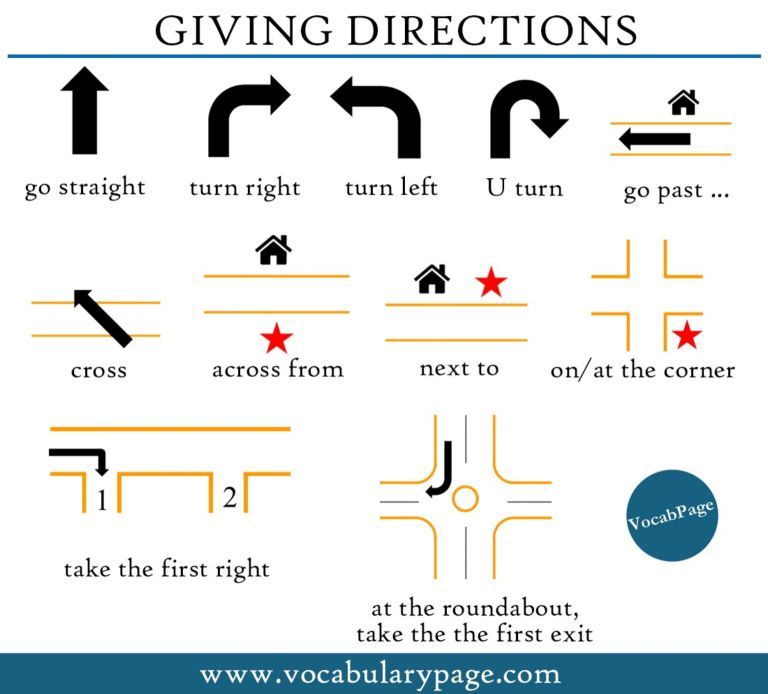
Greater Than Sign
When we compare numbers, we compare the value of numbers. There are some mathematical signs we use instead of words, to compare the numbers. Mathematical symbols make the work simpler and quicker.
Look at the above image which shows the sign. This sign is known as the greater than sign in math. This sign is used to show that one value is greater than the other value. For example, the statement «4 is greater than 2» is true. So we can write it as 4 > 2.
Now, let’s understand the greater than symbol from the left side and the right side. The open side of the sign (>) having two corners/points whereas the closing side of the sign is having only one corner/point. The wide-open side of the sign having two points always faces the bigger number or greater value number, whereas the closing endpoint of a sign faces the smaller number or lesser value number.
Note: We can represent 4 is greater than 2 like this «2 < 4», here, also the wide-open side of the sign is in front of the bigger number that is 4. As the closing endpoint is facing the smaller number 2, we can say in words 2 is less than 4.
Tips and Tricks on Greater Than Sign:
Following are the tips that help in the concept of greater than.
- The words «more than», «greater than», «bigger than», and «larger than» etc. correspond to the sign >.
- The words «minimum», «at least» and «greater than or equal to» etc.
correspond to the sign » ≥ «.
- While comparing the values keep the wide-open side of the sign in front of the greater value.
☛ Related Articles
Check these interesting topics to learn more about greater than and applications related to greater than sign.
- Comparing and Ordering
- Greater Than Calculator
- Greater Than Less Than Worksheets First Grade
- How To Make a Greater Than or Equal to Sign
- Less Than or Equal To
Greater Than Examples
-
Example 1: Mushi is preparing for Annual Sports Meet in her school. On the first trial, she had a jump of 8 feet. On the second trial, she had a jump of 11 feet. On which trial she had the longest jump?
Solution:
The number 11 is greater than the number 8. On the second trial, she had the longest jump and the wide-open side of the sign will be in front of 11, i.
e. 11 > 8.
-
Example 2: Compare the following by putting a greater than sign in between the numbers.
a) 11, 31 (b) 56, 83 (c) 47, 21Solution:
a) 31 > 11. Here, 31 is greater than 11, so the wide-open side of the sign will be in front of 31.
b) 83 > 56. Here, 83 is greater than 56, so the wide-open side of the sign will be in front of 83.
c) 47 > 21. Here, 47 is greater than 21, so the wide-open side of the sign will be in front of 47.
-
Example 3: Harry was counting students of grade III and grade IV. The number of students in grade III is 80 and in IV is 67. Harry wonders which grade has more students. Can you help him?
Solution:
Let’s compare the number of students in each grade. Here in grade III, 80 students are there, and in grade IV, 67 students are there. As 80 is greater than 67, therefore, grade III is having more students as compared to grade IV.
go to slidego to slidego to slide
Breakdown tough concepts through simple visuals.
Math will no longer be a tough subject, especially when you understand the concepts through visualizations.
Book a Free Trial Class
Practice Questions on Greater Than Sign
go to slidego to slide
FAQs on Greater Than
What is Greater Than Sign?
The greater than sign in math is >. It helps us to compare the values of numbers including fractions, decimals, integers, etc. When a number a is greater than the number b, we write it as a > b.
How to Use the Greater Than Sign in Math?
While comparing two numbers we can use greater than symbol in math. For example, let’s compare two-digit numbers, 32 and 17. While comparing the two-digit numbers, we first compare the digit at tens place. If the digits are the same we will compare the digits at ones place. Here the digit at tens place is 3 and 1 and 3 is greater than 1, so 32 is greater than 17.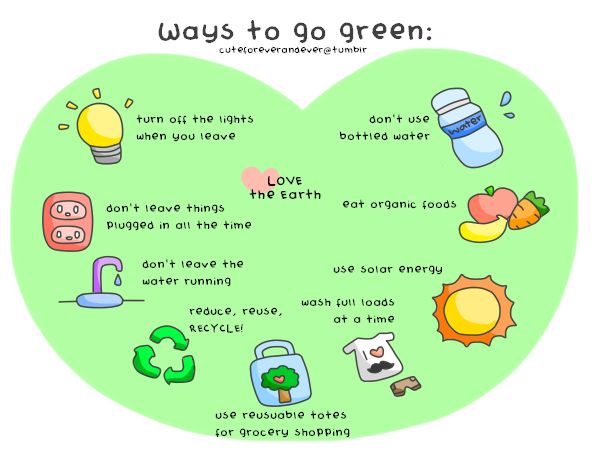
Is 75 Greater Than 74?
Yes, 75 is greater than 74. While comparing the two-digit numbers, we first compare the digits at tens place. If the digits are the same we will compare the digits at ones place. Here the digit at tens place is the same so we will compare the digits at ones place that is 5 and 4 and 5 is greater than 4, so 75 is greater than 74.
What is Greater Than or Equal to Sign?
Greater than or equal to sign is a mathematical symbol that is used when one value is either greater than or equal to some other value. Greater than or equal to symbol looks like » ≥ «.
What is the Difference Between Greater Than and Less than Sign?
Greater than and less than signs can be used to compare numbers. The greater than symbol is >. For example, 8 > 7 is read as ‘8 is greater than 7’. The less-than sign is «<«. 7 < 8, 7 is less than 8.
What is the Difference Between Greater Than and Equal to Sign?
Greater than and equal to signs are used to compare numbers.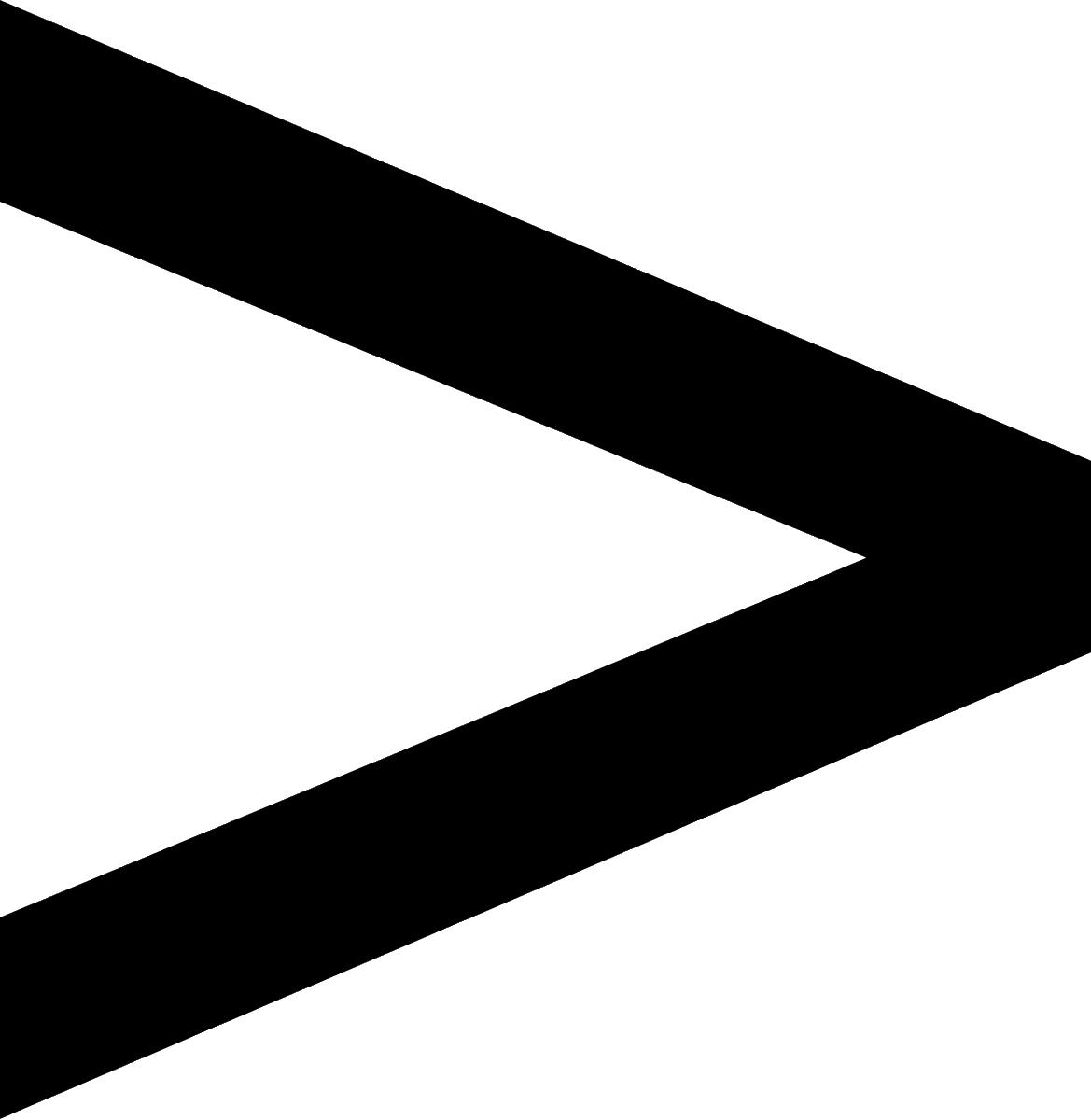
What Fractions are Greater Than 1?
The fractions which are equal to or greater than 1 are known as improper fractions. Some examples of such fractions are 3/2, 5/3, 9/5, etc.
How to Write Greater Than 30?
To express numbers greater than 30, the greater than sign is to be used. For example, to write the following statement mathematically: «31 is greater than 30», we write it as 31 > 30.
How to Remember Greater Than Sign?
The greater sign looks like this «>». The wide-open side of the sign should be in front of the greater number, and the pointed end should be to the smaller number.
Download FREE Study Materials
Greater Than Less Than Worksheet
Math worksheets and
visual curriculum
👍 How to write the greater than sign and the less than sign
Each of us from the school bench (or rather from the 1st grade of elementary school) should be familiar with such simple mathematical symbols as sign greater than and sign less than , as well as .
However, if it is rather difficult to confuse something with the latter, then about how and in which direction the signs more and less than are written ( sign less than and sign more than , as they are sometimes called) many immediately after the same school bench and forget, tk. they are rarely used by us in everyday life.
But almost everyone, sooner or later, still has to face them, and «remembering» in which direction the character they need is written can only be obtained by turning to their favorite search engine for help. So why not answer this question in detail, at the same time telling the visitors of our site how to remember the correct spelling of these signs for the future?
It is exactly how the greater-than sign and the less-than sign are spelled that we want to remind you in this short note. It will also not be superfluous to tell volume how to type characters greater than or equal to and less than or equal to on the keyboard, because this question also quite often causes difficulties for users who encounter such a task very rarely.
Contents:
- How to spell the greater than sign
- How to spell the less than sign
- Greater than or equal/less than or equal sign (how to type on keyboard)
Let’s get straight to the point. If you are not very interested in remembering all this for the future and it’s easier next time to “google” again, and now you just need an answer to the question “in which direction to write the sign”, then we have prepared a short answer for you — signs more and less are written like this, as shown in the image below.
And now let’s talk a little more about how to understand and remember this for the future.
How and in what direction is the greater than sign written? Accordingly, the sign more to the left looks with a wide side — a larger one.
An example of using the greater than sign:
- 50>10 — the number 50 is greater than the number 10;
- student attendance in this semester was >90% of classes.
How and in what direction the less than sign is written
How to write the less than sign, perhaps, it is not worth explaining again. It is exactly the same as the greater than sign. If the sign looks to the left with a narrow side — a smaller one, then the sign is smaller in front of you.
Less than sign example:
- 100<500 - the number 100 is less than five hundred;
- less than 50% of deputies attended the meeting.
As you can see, everything is quite logical and simple, so now you should not have questions about which way to write the greater than sign and the less than sign in the future.
Sign greater than or equal / less than or equal to
«greater than or equal to» .
However, regarding these signs, some people have another question — how to type such an icon on a computer keyboard? As a result, most simply put two signs in a row, for example, «greater than or equal to» denoting as «>=» , which, in principle, is often quite acceptable, but can be made more beautiful and correct.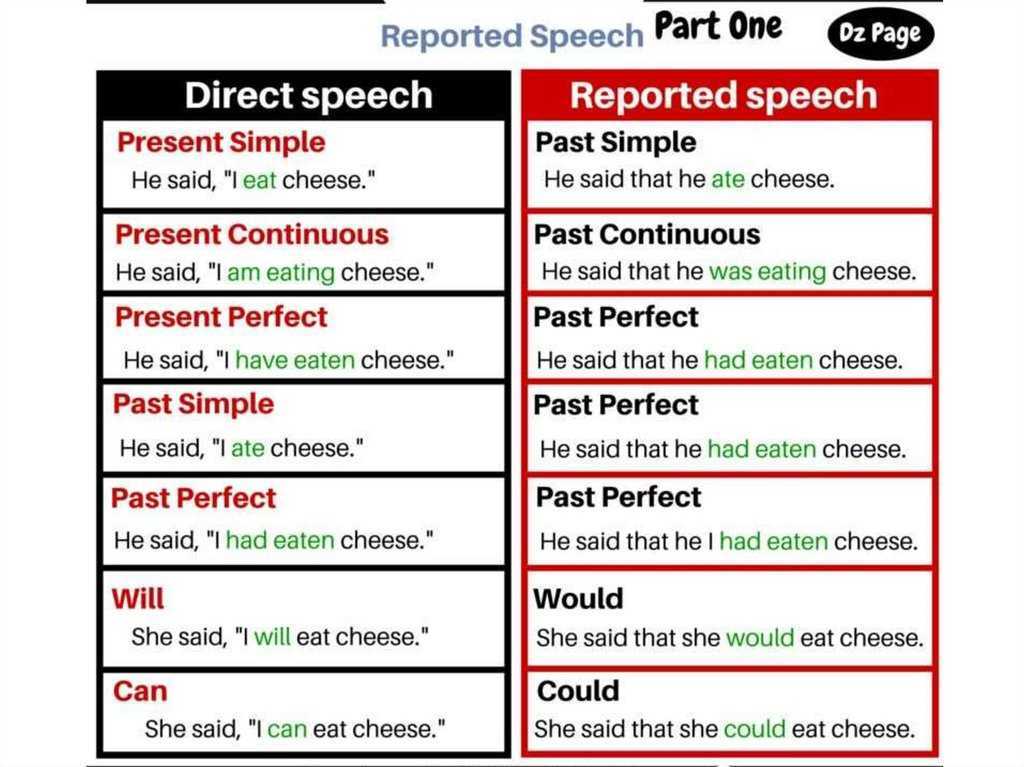
In fact, in order to type these characters, there are special characters that can be entered on any keyboard. Agree, the characters «≤» and «≥» look much better.
The greater than or equal sign on the keyboard
In order to write «greater than or equal» on the keyboard with one character, you don’t even need to go into the table of special characters — just put the greater than sign while holding down the 9 key0003 «alt» . Thus, the keyboard shortcut (entered in the English layout) will be as follows.
alt+y
Or you can just copy the icon from this article if you need to use it once. Here he is, please.
≥
The less than or equal sign on the keyboard
As you probably already guessed, you can write «less than or equal» on the keyboard by analogy with the greater than sign — just put the less than sign while holding down the 9 key0003 «alt» .
alt+b
Or just copy it from this page if it’s easier for you, here it is.
≤
As you can see, the rule for writing greater than and less than signs is quite easy to remember, and in order to type the greater than or equal and less than or equal icons on the keyboard, just press an additional key — everything is simple.
© kak2.ru
August 2, 2020Category Study Tags: greater than, sign, keyboard, math, less than, symbol.
Math lesson. (1st grade): «Signs less than», «greater than», «equal to»
Lesson objectives:
- Educational: introduce the signs less than «<", greater than ">«, equal to «= » and records of the form 2<3, 3>2, 4=4, repeat the geometric material, the composition of numbers;
- Developing: development of personal communicative qualities (the ability to work in pairs, conduct a learning dialogue, conduct self-assessment)
- Educational: fostering a sense of empathy, mutual assistance.
1. Org. torque
Attention, check my friend,
Are you ready to start the lesson?
Moved in place, settled in order
Book, pen and notebooks?
And colored pencils
You put it on the desk,
And don’t forget the ruler
Let’s go to math!Now, guys, sit back,
Don’t make noise, don’t turn around,
And carefully count
And I ask you — answer.
Do you understand the condition?
— Yes!
It pleases me to hear
Journey Calls
First grader to class!
2. Main part:
Teacher: And today we will take a flight into unknown outer space. Today we will not be students, but space explorers. And in order for the flight to be successful, let’s remember what we do in mathematics lessons?
Students: Deciding, counting, writing, thinking…
Teacher: What do you think we will do today?
Pupils: Count, decide, answer, think, draw…
Teacher: To make the flight successful, you must be:
- Attentive
- Perform tasks accurately and correctly
- Do not make mistakes, otherwise the rocket may crash.
At estimated time, starting from the Earth,
To Mysterious Stars
Ships are flying
Imagine: a little dreamed —
And they all became astronauts.
Teacher: So, increased attention! There are 10 seconds left before the launch of the rocket, let’s count a little. (Students keep score)
- Chain count up to 10.
- The teacher starts, the children continue.
- Counting down.
- Counting seconds 10, 9, 8, 7, 6, 5, 4, 3, 2, 1, 0 start. We are in flight!
Teacher: Guys, look at the blackboard, today it has turned into a “starry sky”. But what unusual stars! What do they remind us of?
Students: geometric shapes.
Teacher: What are these figures, name.
Students: segment, line, points, polyline, curve.
Teacher: While we were looking at the sky, our eyes are tired, let’s do exercises for them.
Draw a triangle with your eyes,
Now turn it over
Upside down
And again through the eyes
You lead around the perimeter.
Draw a figure eight vertically
Don’t turn your head,
But only with the eyes carefully
You are along the lines of the driver
And put it on the side.
Now follow horizontally.
And stop in the center.
Close your eyes tight, don’t be lazy.
We finally open our eyes
Charging is over.
Well done!
Teacher: Guys, look, our control panel is in emergency condition. The buttons are stuck, the remote needs to be fixed.
1*34**7*910
- What number comes after 3, 6, 9 when counting?
- What number comes before 2, 5, 8, 10?
- What are the neighbors of the number 2, 7?
But on the remote control, besides the numbers, there are also various signs, they are also erased, let’s restore them (the children answer in turn, the rest clap their hands, if correct)
| 2 3=5 | 4 =2 | |
| 5 1=4 | 1+ =4 | |
| 3+ =5 | 5-=4 |
Well done! The board is correct.
Teacher: While our rocket is going up, let’s play the game «Fold the figure».
It is necessary to fold a figure consisting of four squares from sticks.
How many squares are there? (the figure consists of 4 squares)
Move 2 sticks so that you get 5 identical squares.
Our rocket is moving farther and farther away from the Earth, how nice it is to remember everything connected with the earth. Imagine that we are in a large forest clearing.
Fizminutka: (cheerful music sounds softly)
The sun raises us to exercise,
We raise our hands on command once,
And the foliage rustles merrily above us,
We lower our hands on command two.
Collect berries, mushrooms in a basket —
We lean together on command three.
For four and five
We will jump together.
Well, on command six
Everyone sit quietly at their desks!
Teacher: Now prepare your squares.
What are the fewer squares?
Which number is less than 2 or 3?
There is a special notation in mathematics. This is written as follows: 2<3
< - less than sign
Which squares are more? (blue)
Which number is higher? (3)
Who guessed how to write this down? 3>2
> – greater than sign
The sign is placed so that the «beak» is open to a larger number.
Let’s have a rest and watch TV, what we are showing today (working with the textbook, doing the task).
- How many birds were in the first picture
- How many arrived
- How much is
- They have become more or less
- As written, read
- How many berries on a tassel
- What happened to the berries
- How to spell it
- Which number is greater, less?
Teacher: Our rocket is rapidly rushing up.
Whom can you ask for help if it is very difficult? (partner)
| 2+2 | 1+2 | 4-2 | ||
| 3+2 | 3-1 | 5-3 |
— We won, the ship is moving away. Let’s fill in the logs. Check the workplace, sit comfortably so that the logbooks are correct, the entries are clear and accurate. We work on page 11.
— Signs in front of you. What is the name of the first sign? (more)
What is the name of the second sign? (less than)
Write a dotted character, append to the end of the line.
Teacher: Before the launch of the rocket, I suggest you work in pairs. You have cards on the tables, you need to insert the missing signs «more» or «less».
Card.
| 2*3 | 5*7 | 8*5 | ||
| 5*3 | 10*7 | 6*2 | ||
| 3*9 | 7*1 | 6*9 |
3.

Thanks to friendly work, our rocket made a soft landing. During the flight, we did a lot of work.
– Tell me, what did you learn new about yourself?
– What did we do today?
– What helped you to work well in class?
You have muzzles on the tables, draw faces on them, happy or sad, for whom it was good to raise a cheerful muzzle during the lesson. And who didn’t succeed and was sad? (there may not be any)
Flight completed, thank you all!
More and less signs in mathematics — comparison of numbers with examples Children often confuse what a particular symbol means. Parents can help their children in this matter, which will positively affect the academic performance of children. This knowledge will be useful to kids in the future — when studying geometry, in algebra lessons, in examples where square and other degrees of numbers are used. The tips in this article will help parents teach their kids important mathematical wisdom.

Math symbols in pictures for preschoolers
Below is a color representation of the math symbols. When teaching, they can be used directly from the monitor screen or they can be printed on a color printer.
Greater than sign — in which direction
Greater than sign is written like this «>» . The symbol is indicated by an arrow, the direction of the acute angle of which is turned to the right. A bit of theory: the determining factor is the left side of the character. If the arrow starts with two lines that converge to one point on the right side, then this is the “>” sign.
The less-than sign — how to spell it correctly
The less-than sign looks like this «<" . Simply put, the arrow should point to the left. Again, the left side of the arrow is important for the definition. If the point from which two lines come out is located on the left, then this is the symbol «<".
Signs greater than or equal to / less than or equal to
Signs greater than or equal to and less than or equal to look like “≥”, “≤”, respectively. They are the result of combining two characters — «>» or «<" and one line.
This line is below the arrow. In this case, there is no intersection of the arrow with the line below it. Typically, the bottom line follows the principle of parallelism with respect to the bottom of the character.
These signs are used in non-strict inequalities. In the first grade, such inequalities are usually not studied.
Examples for comparing numbers for class 1
In the first block of examples (Table 1) you need to put the correct character. Left and right are only single digits.
The second block of examples (Table 2) contains examples in which you need to match the sums of numbers. In case of equality, you must enter the «equal» sign.
Games for quick memorization of greater than and less than signs
There are various logic games using mathematical symbols. There are many such games. Below are three games where children need to play with the «>» and «<" arrows.
Big hungry crocodile game
This is the easiest and most visual way to remember once and for all in which direction the greater than and less than signs are written. On a sheet of paper, you need to draw two round plates. The diameter of each plate must be at least 10 centimeters.
On each of the «plates» you can put something roughly resembling food. For example, you can mold balls from plasticine or salt dough and agree with the child that peas mean cutlets for a crocodile. For this game, it is enough to make one character. It can be done on a small card. The designations «>» and «<" roughly resemble the likeness of an open mouth of a crocodile.
An important condition — the crocodile always chooses only the plate on which there is more food! This should be told to the child.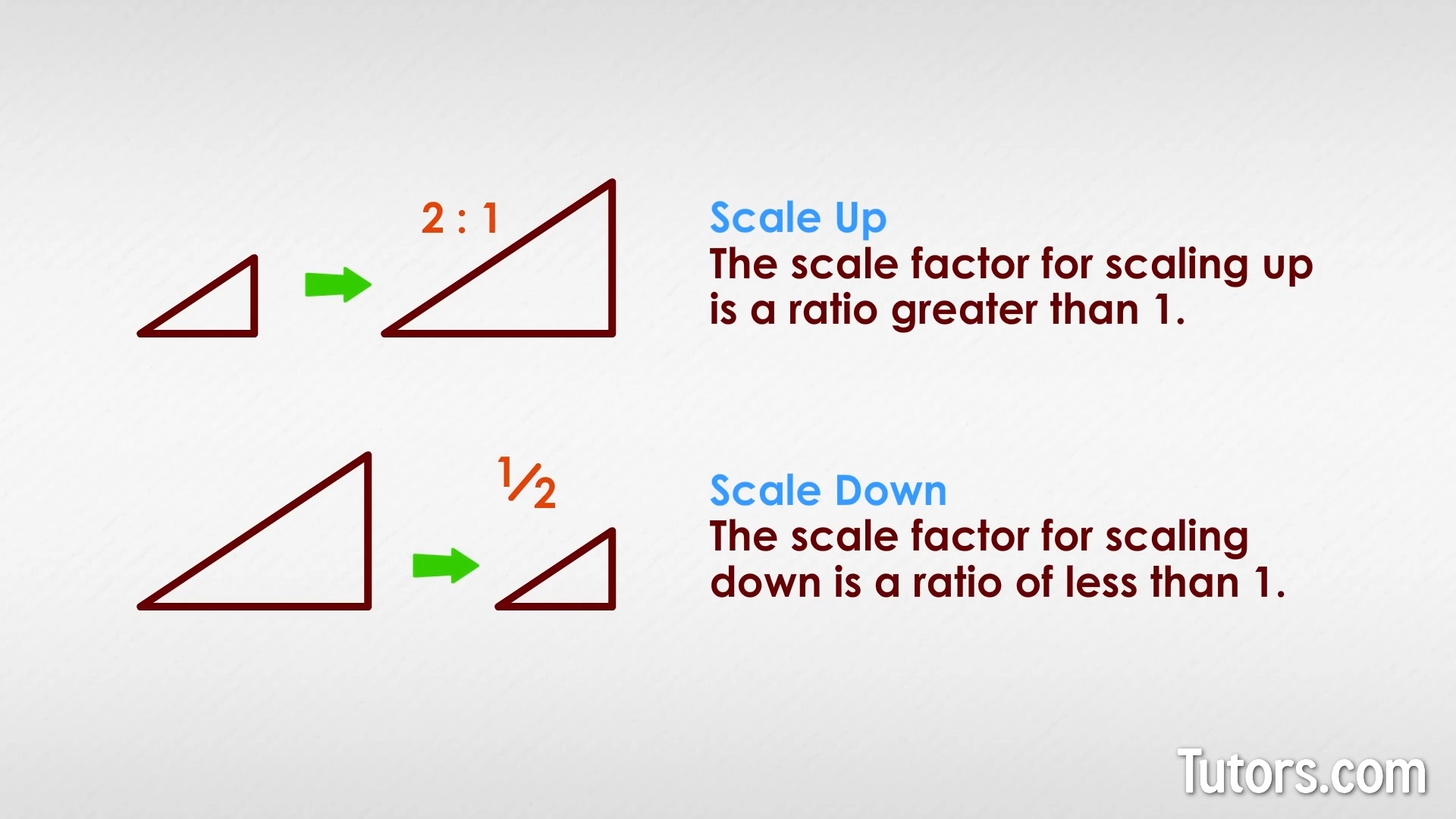
Place a certain number of cutlets on both «plates». Then have the child place the card so that the «crocodile’s mouth» is facing the «plate» with more «patties».
Game «What more?»
In this game, the combination of the thumb and forefinger of the left hand is the symbol «<", and the combination of the thumb and forefinger of the right hand is the symbol ">«. To indicate that which is more, it is enough to stretch out the right hand, and the left hand is needed to indicate that which is less.
In this comparison game, you can use not only numbers, but also images of various objects, as well as geometric shapes of different sizes. This game-activity can be performed during meals, spreading cookies, sweets, apples and other products on the table. This is how you can remember the correct spelling of signs long before school.
Blocks and boards game
This game belongs to the category of active games, as children need to perform actions not only of a mental nature, but also to be active builders.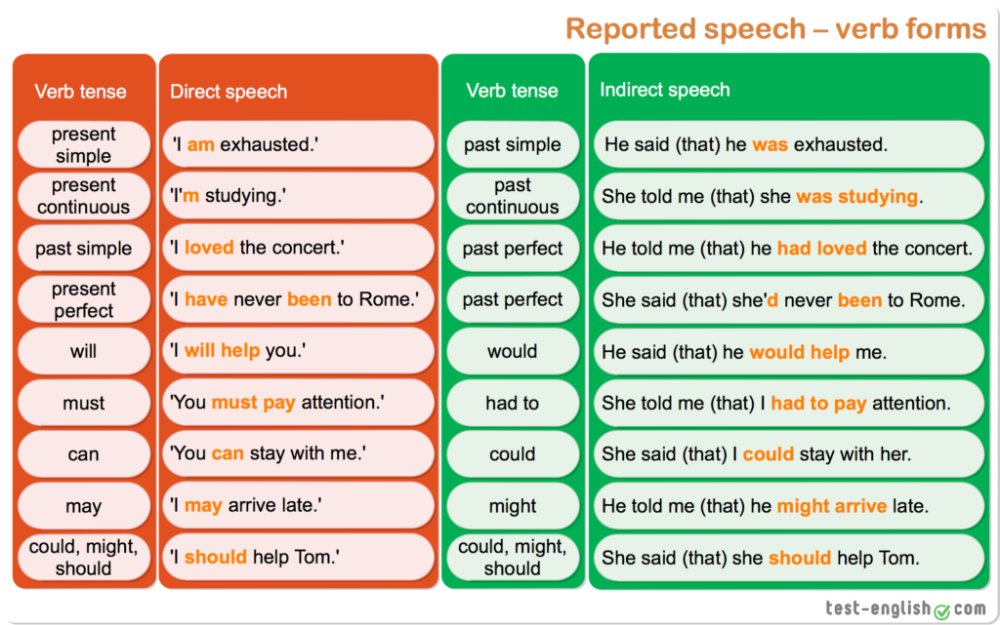
It is important that the bars be even, like an exclamation mark. For example, the first (left) column consists of 4 cubes, and the second of 2. Then you need to put the second board on both posts. As a result, the combination of the lower and upper boards will show the correct symbol. In this example, the designation «>» will be obtained.
With each successive time, you can change the number of cubes in the columns. When the columns contain the same number of cubes, the boards will show “equal”.
Conclusion
So, in mathematics, the symbols «>» and «<" are used quite often. Toddlers are able to master the principle of their application quite early. Using the tips in this article, parents will help their children do it quickly and in a fun way.
Traffic rules of the Russian Federation, 3. Prohibitory signs \ ConsultantPlus
This document is included in the list of legal acts that are not subject to the requirement to cancel from 01/01/2021, established by the Federal Law of 07/31/2020 N 247-FZ.
Traffic rules of the Russian Federation, 3. Prohibition signs
See this graphic object.
Prohibition signs introduce or remove certain traffic restrictions.
3.1 «No Entry». It is forbidden to enter all vehicles in this direction.
3.2 «Movement prohibited». All vehicles are prohibited.
3.3 «Motor vehicles prohibited».
3.4 «Traffic vehicles prohibited». The movement of trucks and vehicles with a maximum authorized mass of more than 3.
Sign 3.4 does not prohibit the movement of trucks intended for the transport of people, vehicles of federal postal organizations with a white diagonal stripe on a blue background on the side surface, as well as trucks without a trailer with a maximum permitted weight of not more than 26 tons, which serve businesses in the designated area. In these cases, vehicles must enter and exit the designated area at the intersection closest to their destination.
(as amended by Decrees of the Government of the Russian Federation of 04/21/2000 N 370, of 12/19/2014 N 1423)
(see the text in the previous edition)
3.5 «Motorcycles are prohibited».
3.6 Tractors prohibited. The movement of tractors and self-propelled machines is prohibited.
3.7 «Trailer prohibited». The movement of trucks and tractors with trailers of any type, as well as the towing of mechanical vehicles, is prohibited.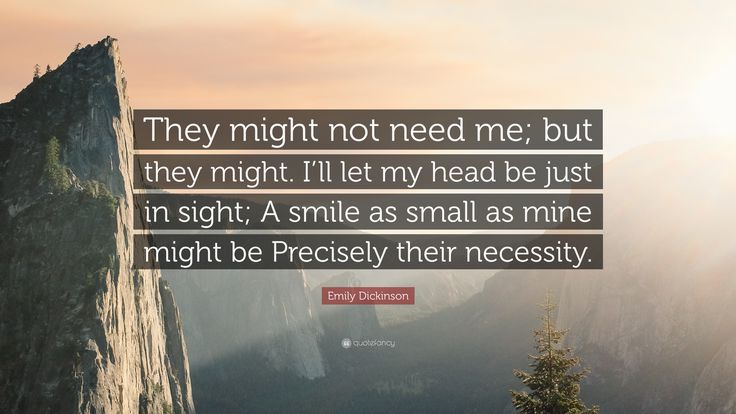
3.8 «Movement of horse-drawn vehicles is prohibited.» The movement of horse-drawn carts (sleighs), riding and pack animals, as well as the driving of livestock is prohibited.
3.9 No bicycles allowed. Bicycles and mopeds are prohibited.
3.10 «Pedestrians prohibited».
3.11 «Weight limitation». It is forbidden to move vehicles, including vehicles, the total actual mass of which is more than indicated on the sign.
3.12 «Weight limit per vehicle axle». It is forbidden to move vehicles whose actual weight on any axle exceeds that indicated on the sign.
(as amended by Decree of the Government of the Russian Federation of December 14, 2005 N 767)
(see the text in the previous edition)
3.13 «Height limitation». The movement of vehicles whose overall height (with or without cargo) is more than indicated on the sign is prohibited.
3.14 «Width limitation». The movement of vehicles whose overall width (with or without cargo) is greater than that indicated on the sign is prohibited.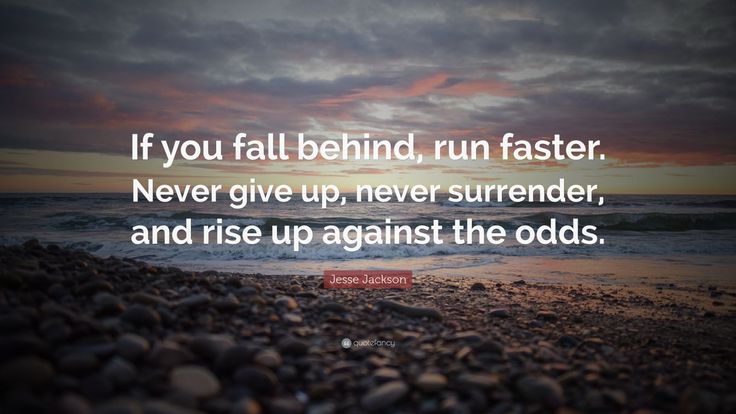
3.15 «Length limitation». The movement of vehicles (vehicle combinations) whose overall length (with or without cargo) is greater than that indicated on the sign is prohibited.
3.16 «Minimum distance limitation». The movement of vehicles with a distance between them less than indicated on the sign is prohibited.
3.17.1 «Customs». It is forbidden to travel without stopping at the customs (checkpoint).
3.17.2 «Danger». The further movement of all vehicles without exception is prohibited in connection with a traffic accident, accident, fire or other danger.
(as amended by Decree of the Government of the Russian Federation of December 14, 2005 N 767)
(see text in previous edition)
3.17.3 «Control». Passing through checkpoints without stopping is prohibited.
(as amended by Decree of the Government of the Russian Federation of December 14, 2005 N 767)
(see the text in the previous edition)
3.18.1 «Turn to the right is prohibited.
3.18.2 «No left turn».
3.19 No U-turn.
3.20 No overtaking. It is forbidden to overtake all vehicles, except for slow-moving vehicles, horse-drawn vehicles, bicycles, mopeds and two-wheeled motorcycles without a side trailer.
(as amended by Decrees of the Government of the Russian Federation of 05/10/2010 N 316, 03/22/2014 N 221, 10/24/2014 N 1097)
(see the text in the previous edition)
3.21 «End of the overtaking prohibition zone».
3.22 «No overtaking by trucks». Trucks with a maximum authorized mass of more than 3.5 tons are prohibited from overtaking all vehicles.
(as amended by Decree of the Government of the Russian Federation of December 14, 2005 N 767)
(see the text in the previous edition)
3.23 «End of no overtaking zone for trucks».
3.24 «Maximum speed limit». It is forbidden to drive at a speed (km/h) exceeding that indicated on the sign.
3.25 «End of the maximum speed limit zone».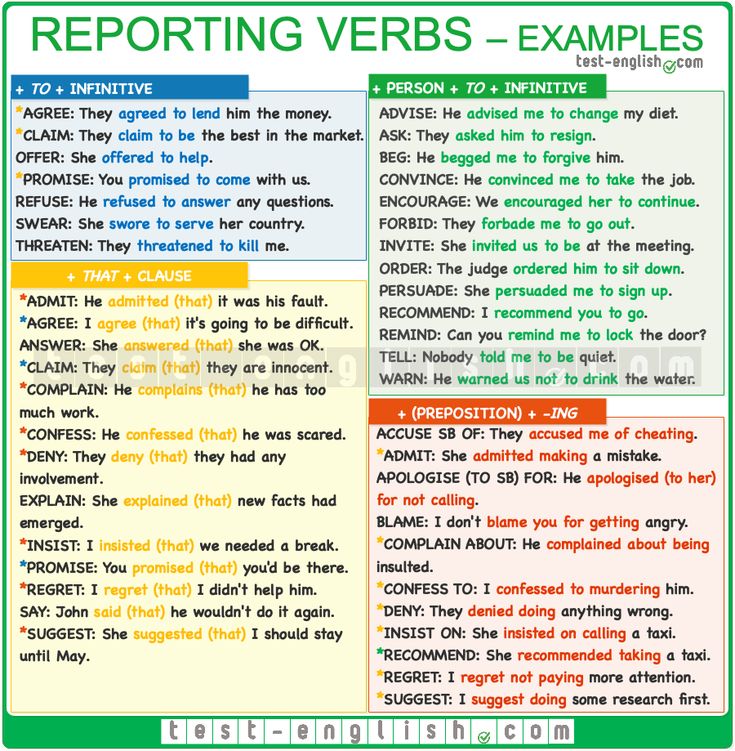
3.26 «Sounding prohibited». It is forbidden to use sound signals, except when the signal is given to prevent a traffic accident.
3.27 «Stop prohibited». Stopping and parking of vehicles is prohibited.
3.28 No parking. Parking of vehicles is prohibited.
3.29 «Parking prohibited on odd days of the month.»
3.30 «Parking prohibited on even days of the month.» With the simultaneous use of signs 3.29 and 3.30 on opposite sides of the carriageway, parking is allowed on both sides of the carriageway from 19:00 to 21:00 (change time).
(as amended by Decree of the Government of the Russian Federation of December 14, 2005 N 767)
(see the text in the previous edition)
3.31 «End of all restriction zone». Designation of the end of the coverage area at the same time several characters from the following: 3.16, 3.20, 3.22, 3.24, 3.26 — 3.30.
3.32 «No traffic for vehicles carrying dangerous goods.» The movement of vehicles equipped with identification signs (information plates) «Dangerous goods» is prohibited.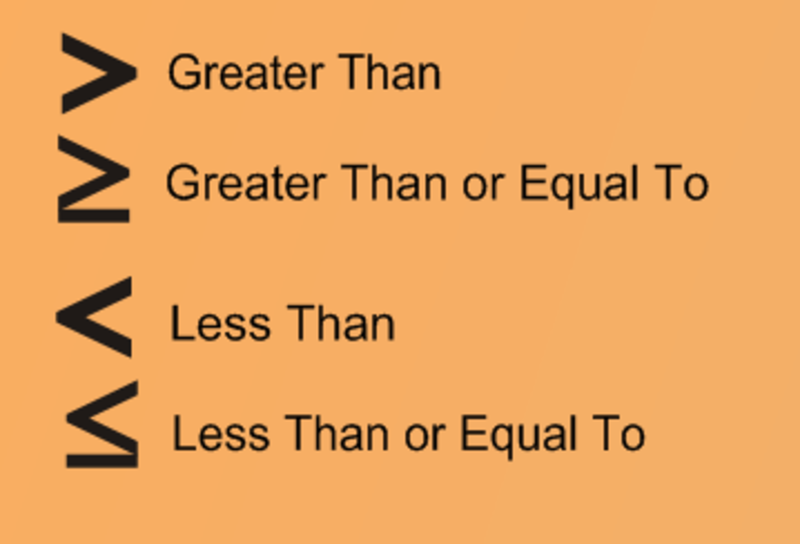
(as amended by Decree of the Government of the Russian Federation of December 14, 2005 N 767)
(see the text in the previous edition)
3.33 «The movement of vehicles with explosive and flammable goods is prohibited.» The movement of vehicles transporting explosive substances and products, as well as other dangerous goods subject to marking as flammable, is prohibited, except for the cases of transportation of these hazardous substances and products in a limited amount, determined in the manner prescribed by special transportation rules.
(as amended by Decree of the Government of the Russian Federation of December 14, 2005 N 767)
(see the text in the previous edition)
The paragraph became invalid on July 18, 2018. — Decree of the Government of the Russian Federation of May 30, 2018 N 618.
(see the text in the previous edition)
Signs 3.2 — 3.9, 3.32 and 3.33 prohibit the movement of the corresponding types of vehicles in both directions.
Signs do not apply:
3.1 — 3.3, 3.18.1, 3.18.2, 3.19 — route vehicles;
(as amended by Decree of the Government of the Russian Federation of July 12, 2017 N 832)
(see text in the previous edition)
3.2, 3.3, 3.5 — 3.8 — for vehicles of federal postal organizations with a white diagonal a strip on a blue background, and vehicles that serve enterprises located in the designated area, as well as serve citizens or belong to citizens living or working in the designated area. In these cases, vehicles must enter and exit the designated area at the intersection closest to their destination;
(as amended by Decrees of the Government of the Russian Federation of April 21, 2000 N 370, of July 23, 2013 N 621)
(see the text in the previous edition)
the paragraph is no longer valid. — Decree of the Government of the Russian Federation of December 19, 2014 N 1423;
(see the text in the previous edition)
3.28 — 3.30 — for vehicles driven by disabled people, transporting disabled people, including children with disabilities, if the identification sign «Disabled» is installed on these vehicles, as well as for vehicles organizations of the federal postal service, having a white diagonal stripe on a blue background on the side surface, and in a taxi with a taximeter turned on;
(as amended by Decree of the Government of the Russian Federation of November 24, 2018 N 1414)
(see the text in the previous edition)
3.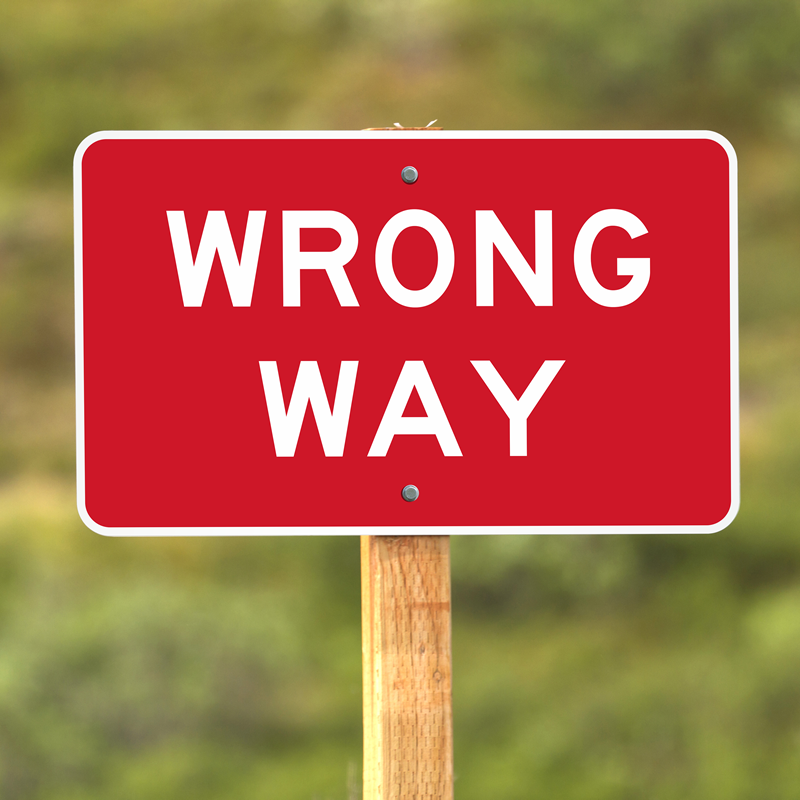
(as amended by Decree of the Government of the Russian Federation of November 24, 2018 N 1414)
(see the text in the previous edition) or parking of vehicles used as a passenger taxi, marked with markings 1.17 and (or) signs 5.16 — 5.18, respectively.
(the paragraph was introduced by Decree of the Government of the Russian Federation of July 12, 2017 N 832)
the paragraph became invalid on July 18, 2018. — Decree of the Government of the Russian Federation of May 30, 2018 N 618.
(see the text in the previous edition)
Signs 3.18.1, 3.18.2 apply to the intersection of carriageways in front of which a sign is installed.
The coverage area of signs 3.16, 3.20, 3.22, 3.24, 3.26 — 3.30 extends from the location of the sign to the nearest intersection behind it, and in populated areas in the absence of an intersection — to the end of the populated area.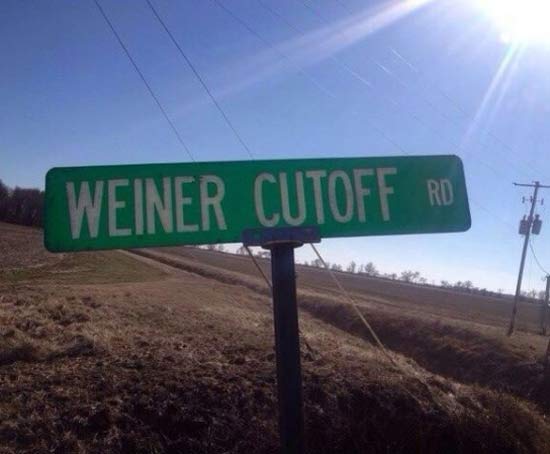
Sign 3.24 installed in front of a settlement marked with sign 5.23.1 or 5.23.2 extends up to this sign.
(as amended by Decree of the Government of the Russian Federation of December 14, 2005 N 767)
(see the text in the previous edition)
The paragraph became invalid on July 18, 2018. — Decree of the Government of the Russian Federation of May 30, 2018 N 618.
(see the text in the previous edition)
The zone of action of signs can be reduced:
for signs 3.16 and 3.26 using plate 8.2.1;
(as amended by Decree of the Government of the Russian Federation of December 14, 2005 N 767)
(see the text in the previous edition)
for signs 3.20, 3.22, 3.24 by installing signs 3.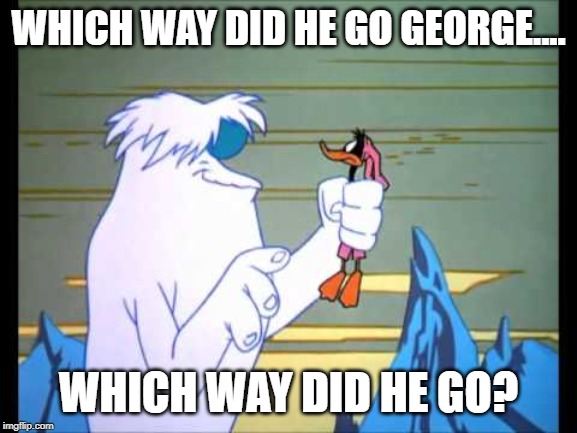
(as amended by Decree of the Government of the Russian Federation of December 14, 2005 N 767)
(see the text in the previous edition)
for signs 3.27 — 3.30 by installing repeated signs 3.27 — 3.30 at the end of their coverage area with a plate 8.2.3 or using a plate 8.2.2. Sign 3.27 can be used in conjunction with marking 1.4, and sign 3.28 — with marking 1.10, while the area of operation of signs is determined by the length of the marking line.
(as amended by Decree of the Government of the Russian Federation of December 14, 2005 N 767)
(see the text in the previous edition)
Signs 3.10, 3.27 — 3.30 are valid only on the side of the road on which they are installed.
Logical expressions and operators. Lesson 6 of the course «Python. Introduction to Programming»
Boolean expressions and boolean data type
Often in real life we agree with a statement or deny it.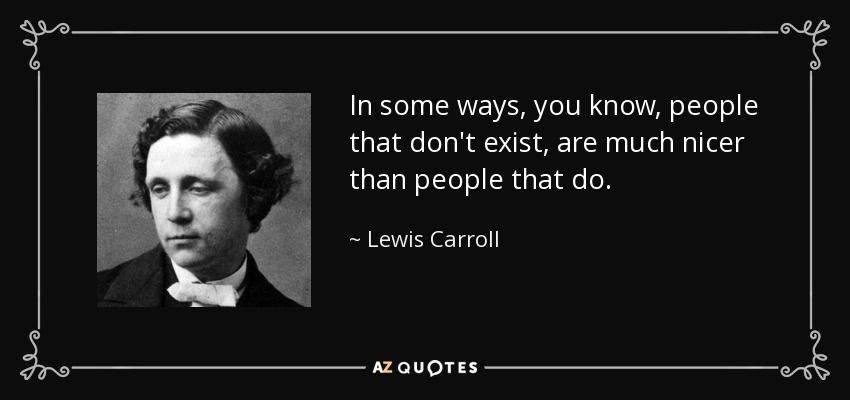
Such phrases suggest only two possible answers — either «yes», when the expression is evaluated as true, true, or «no», when the statement is evaluated as erroneous, false. In programming and mathematics if the result of evaluating an expression can only be true or false, then such an expression is called logical .
For example, the expression 4 > 5 is boolean because its result is either true or false. The expression 4 + 5 is not a logical expression, because the result of its execution is a number.
In the lesson before last, we got acquainted with three data types — integers and real numbers, as well as strings. Today we will introduce the fourth — logical data type (type bool ).
>>> a=True >>> type(a)>>> b=False >>>type(b)
Here, the variable a has been assigned the value True , and then its type is checked using the Python built-in function type() . The interpreter reported that this is a class variable bool . The concepts of «class» and «data type» in this case are one and the same. The variable b is also associated with a boolean value.
In programming, False is usually set to zero and True to one. To verify this, you can convert a boolean value to an integer type:
>>> int(True) one >>> int(False) 0
The opposite is also possible. You can convert any value to a boolean type:
>>> bool(3.4)
True
>>> bool(-150)
True
>>> bool(0)
False
>>> bool(' ')
True
>>> bool('')
False
And here the rule works: everything that is not 0 and not empty is true.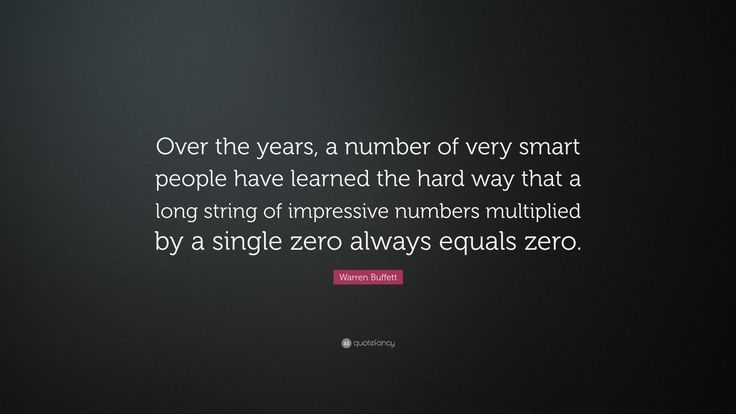
Logical operators
Speaking in a natural language (for example, Russian), we designate comparisons with the words «equal», «greater», «less». Programming languages use special characters similar to those used in mathematics: > (greater than), < (less than), >= (greater than or equal), <= (less than or equal), == (equal), != (not equal) .
Do not confuse the variable assignment operation, denoted in Python by a single equals sign, with the comparison operation (two equals signs). Assignment and comparison are different operations.
>>> a = 10 >>>b=5 >>> a + b > 14 True >>> a < 14 - b False >>> a <= b + 5 True >>> a != b True >>> a == b False >>> c = a == b >>> a, b, c (10, 5, False)
In this example, the expression c = a == b consists of two subexpressions. First there is a comparison ( == ) of variables a and b .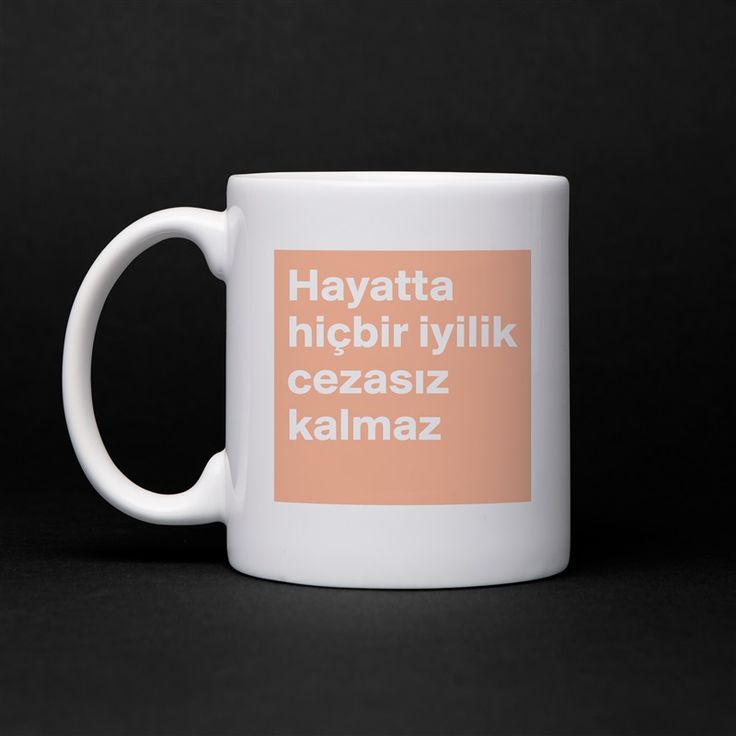
a, b, c simply displays the values of the variables on the screen.
Complex logical expressions
Boolean expressions like kByte >= 1023 are simple because they only perform one logical operation. However, in practice there is often a need for more complex expressions. You may need to get a "Yes" or "No" answer depending on the result of executing two simple expressions. For example, "it's snowing or raining outside", "variable news over 12 and under 20".
In such cases, special operators are used that combine two or more simple logical expressions. Two operators are widely used - the so-called logical AND ( and ) and OR ( or ).
To get True when using the operator and , the results of both simple expressions that this operator binds must be true.
False , then the entire complex expression will be false.
To get True using the operator or , it is necessary that the result of at least one simple expression that is part of a complex expression is true. In the case of the operator or , the compound expression becomes false only when both of its constituent simple expressions are false.
Suppose variable x was assigned the value 8 ( x = 8 ), variable y was assigned 13 ( y = 13 ). The boolean expression y < 15 and x > 8 will be executed as follows. First, the expression y < 15 will be executed. Its result will be True . Then the expression x > 8 will be executed. Its result will be False . The expression will then reduce to True and False , which will return False .
>>>x=8 >>>y=13 >>> y < 15 and x > 8 False
If we wrote the expression like this: x > 8 and y < 15 , then it would also return False . However, the comparison y < 15 would not be performed by the interpreter, since there is no need to perform it. After all, the first simple boolean expression ( x > 8 ) has already returned false, which, in the case of the operator and , makes the entire expression false.
In the case of the operator or , the second simple expression is checked if the first returned false, and not checked if the first already returned true. Since for the truth of the whole expression, the only True , no matter which side of or it is.
>>> y < 15 or x > 8 True
Python also has a unary logical operator not , that is, negation. He turns truth into lies and lies into truth.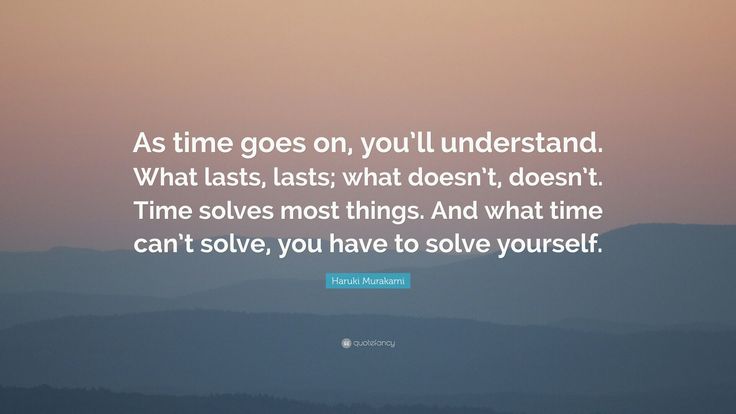
and and or .
>>> not y < 15 False
Here y < 15 returns True . Negating this, we get False .
>>> a = 5 >>>b=0 >>> not a False >>> not b True
The number 5 is interpreted as true, the denial of truth gives a lie. Zero equals False . Negating False gives True .
Practical work
-
Assign any numeric values to two variables.
-
Using the variables from step 1, use the operator
andto construct two complex logical expressions, one of which is true, the other is false. -
Do step 2 in the same way, but with the operator
or. -
Try using string type variables in boolean expressions. Explain the result.
-
Write a program that asks the user for two numbers and outputs
TrueorFalsedepending on whether the first number is greater than the second or not.
Solution examples and additional lessons in the android application and pdf version of the course
In search of the right house, we wander around the street, trying to figure out which direction the numbering is growing in
x
|
Ilya Birman |
Denis, well, I don’t know 🙂 This symbol is clear to everyone as a symbol of volume, and not the direction of numbering. Much clearer when written ← 23 27 → . Of course, if the ability to attach this thing to existing numbers is considered as a condition of problem , then this is a clever solution. By the way, the word |
|||||||
|
Tweet Share Share Send |
||||||||
Comments |
||||||||
|
Alexander Ilyinsky July 7, 2010 |
By the way, about the names "Komarov Street". |
|||||||
|
Ilya Gelman July 7, 2010 |
In addition to Ilya's words, it seems to me that this sign is associated with loudness precisely in this arrangement, that is, in an inverted state, it will be recognized even less. Although, I think it's all a matter of habit. If such signs are at least 90% of all houses in the city, then it is quite possible that people will get used to it. But I also like the ← 23 27 → option more. |
|||||||
|
Denis Bogomolov July 7, 2010 |
Ilya, of course ← 23 27 → will be clearer and more informative, but their use leads to a “weighting” of the sign. |
|||||||
|
Anatoly Rr Burov July 7, 2010 |
In St. Petersburg it is much simpler: if you stand so that on the right there are houses with odd numbers, then the numbers will increase forward. Seeing the presented pointer in St. Petersburg, you immediately understand that ← 27 23 → . |
|||||||
|
Yaroslav Patrikeyev July 7, 2010 |
In Samara, on many streets at the beginning of a block, there is not only a sign with the name of the street and the house number, but also a sign on which, under the name of the street, a range of house numbers in this block is written. |
|||||||
|
Zhenya Sofronov July 7, 2010 |
Good afternoon! I think it's better to write not the number of the nearest house, but the number of the last house in the quarter: ← 1947→. So you can estimate how far the desired house is. And, in my opinion, the bigger problem is finding the right building-building-letter-... The only solution that comes to my mind is to place a plan of the surroundings. Maybe there is something more elegant? |
|||||||
|
Denis Chernik July 7, 2010 |
And if you also write numbers inside the “loudness” triangle? Approximately like in the picture? The sign is not overloaded, it reads the same way from a distance. You can even write four digits inside - the first number of the quarter, the previous number, the next number and the last number of the quarter. |
|||||||
|
July 7, 2010 |
Birman, I think this is a fucking topic. Specially violated the usual direction: |
|||||||
|
Milos Stevanovic July 8, 2010 |
Artyom, in this case, it is probably possible to get rid of the "loudness"? |
|||||||
|
Denis Bogomolov July 8, 2010 |
Anatoly, in Rostov, the direction of numbering is sometimes difficult to predict. Denis Chernik, good idea. The disadvantage is that the font size is too small. Artyom combined two ideas - sign and range. If you look from afar, you can simply see the direction of growth, when you come closer, you can find out the details. |
|||||||
|
Denis Bogomolov July 8, 2010 |
By the way, I used the order of the words "street" (lane, avenue, descent) - the name, based on the following considerations: in oral speech and in writing, we often use only the name ("Chief, can you take me to Komarov for two hundred?"), Therefore it comes first and is in bold. The word "street" has a secondary meaning and is under the name. |
|||||||
|
Alexander Zhuravsky July 8, 2010 |
Directions can be marked in the form of a plate, for example: |
|||||||
|
Vladimir Ozirny 9July 2010 |
And if it's even simpler? |
|||||||
|
Denis Chernik July 12, 2010 |
Vladimir Ozirny - it is not clear what number this house has, either 23 or 25. |
|||||||
|
Vladislav Mushinsky July 12, 2010 |
Often the houses are arranged not in one ascending line, but in several. It happens that there is no house number at all. And there are also numbers with letters. You are considering the best option. It would be very handy to have a block layout at bus stops - this is a frequent entry point to an unfamiliar part of the city. You can also draw a layout on one of the houses that is in maximum contact with the roadway - for example, at an intersection. On the house, the layout sign could be indicated in volume and optically in color - this role could be played by a special lantern, which at the same time illuminates the plan in the dark and draws attention to it during the day. |
|||||||
|
Maxim Ponomarev July 13, 2010 |
Comrades, I will add another question to the question (Zhenya Sofronov has already mentioned this): "But what about the cunning arrangement of buildings?" |
|||||||
|
Marat Saitakov July 22, 2010 |
I have already seen such a designation in the city of Siauliai. |
|||||||
|
Sergey Komarov July 26, 2010 |
I also worry about this topic. The option with the “loudness” sign doesn’t seem very good to me, and adding the previous and next houses only litters. An adult knows that one of the sides of the streets is even, and the other is vice versa. If houses are placed in a confusing way, then it is worth considering the placement of the block diagram. And for an ordinary standard street sign, you can limit yourself to only the numbering direction, for example, an arrow. |
|||||||
|
Alexander Komarov July 28, 2010 |
I'm finally famous! 🙂 |
|||||||
|
Rinat Rehimkulov August 4, 2010 |
How is it? |
|||||||
|
Marat Saitakov July 1, 2011 |
By the way, here is an even more elegant sign in Odessa: |
|||||||
|
Dmitry Pliska July 10, 2011 |
A similar system (when commentators and implementers come to a decision) can be implemented for train cars. |
|||||||
|
Vladimir Sinelnikov August 30, 2011 |
>By the way, the word "street" in this case should be written before the name of the street Ilya, may I know what was the basis for such an opinion? Before the revolution, many full houses had exactly the same spelling as the author of the post (godonym + "street"). This form is also preserved in modern route orientation signs. |
|||||||
|
Andrey Vorobyov September 6, 2011 |
I like Denis Bogomolov's first version better and more understandable, although yes, the "street" should be on top. What about streets that are perpendicular to themselves? Or which are parallel to themselves? Or do they intersect themselves twice and are twice parallel? This happens too 🙂 |
|||||||
|
Alexander Smerdov September 15, 2011 |
Andrei, on such streets you can draw a hare of bad luck, for example. Why stifle good mass ideas with such restrictions? Well, one out of a hundred streets will not correspond to the general concept, and figs with it. |
|||||||
|
Related Tips
twenty In huge letters the name 5 12 one one 5 four 6 7 5 How to write on the store door: 6 13 eleven 12 16 3 6 four eight 26 ten 29' What else can serve to simplify navigation in the subway? 16 7 Light and dark themes on metro maps one one 5 6 2 2 one one four Several equal modes of transport 2 Navigation for forests and parks one 2 one one 2 How are transport schemes checked on an eye tracker? Part 4 How are transport schemes checked on an eye tracker? Part 3 How are transport schemes checked on an eye tracker? Part 2 How are transport schemes checked on an eye tracker? 5 2 What is the point in the scheme of movement of certain types of transport? 5 one one one one one 3 3 What to say at the presentation to the deptrans? one 2 2 one 5 In general, 45° angles are everywhere. | |||||||


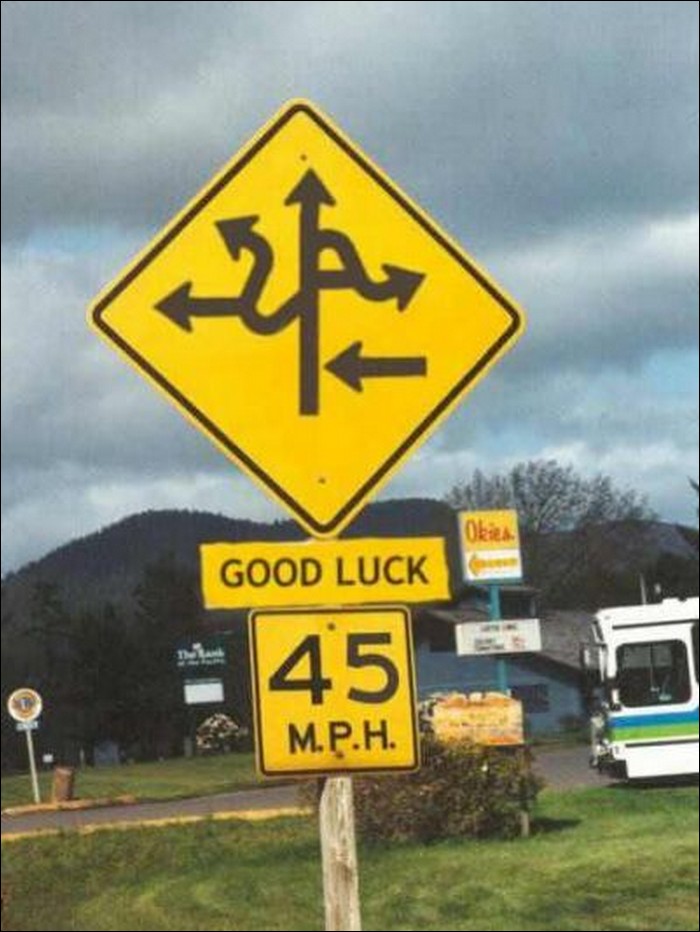 ) True, 6 ≥ x ≥ -1 means that the value of x is between -1 and 6 inclusive of both values.
) True, 6 ≥ x ≥ -1 means that the value of x is between -1 and 6 inclusive of both values.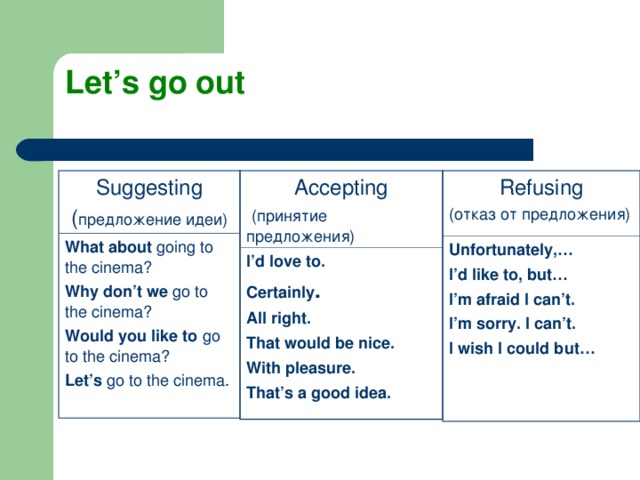 correspond to the sign » ≥ «.
correspond to the sign » ≥ «. e. 11 > 8.
e. 11 > 8.
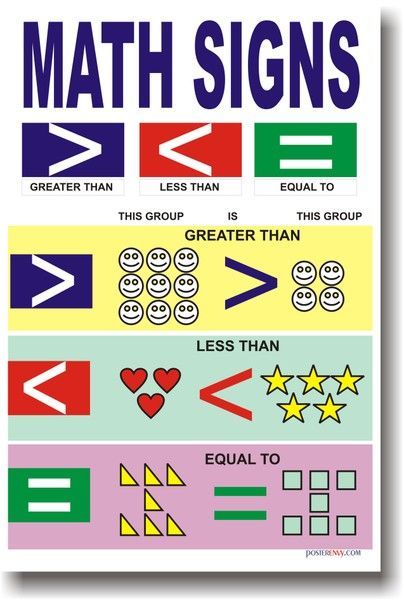

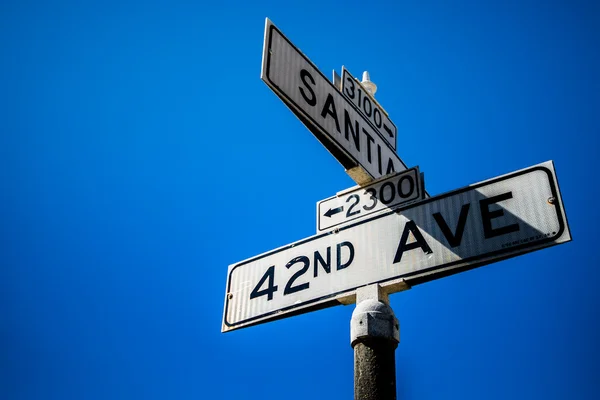
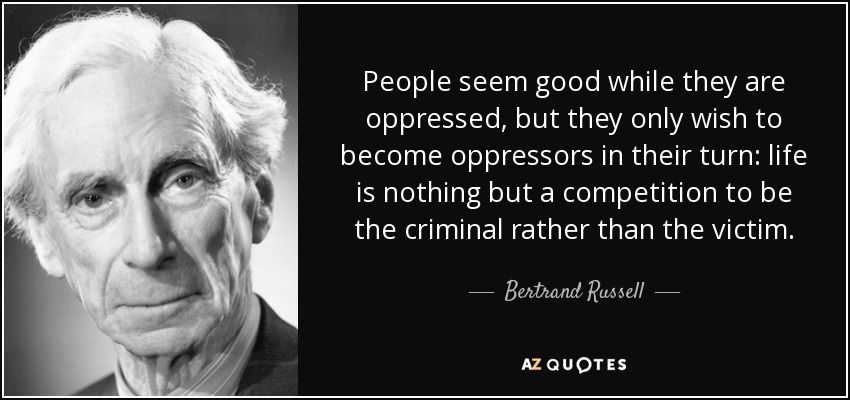
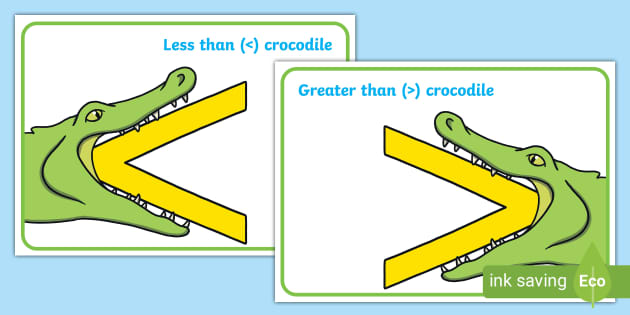 But the numbers on the houses in our cities often look alien enough to be provided with similar patches.
But the numbers on the houses in our cities often look alien enough to be provided with similar patches. 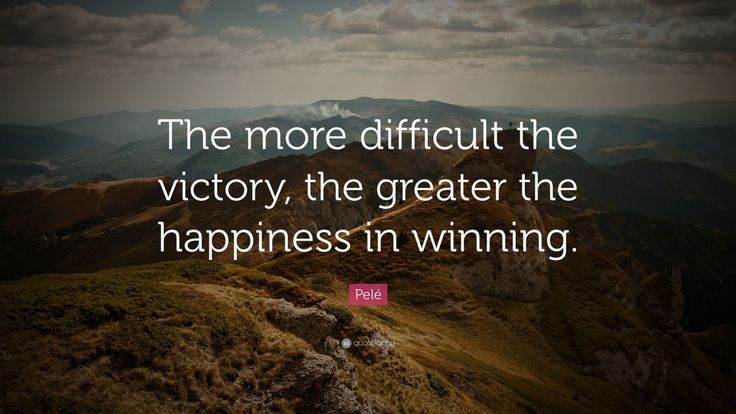 Why not write "street", "alley", etc. with a small letter? And then everyone writes "Komarov Street", and this is terrible.
Why not write "street", "alley", etc. with a small letter? And then everyone writes "Komarov Street", and this is terrible. 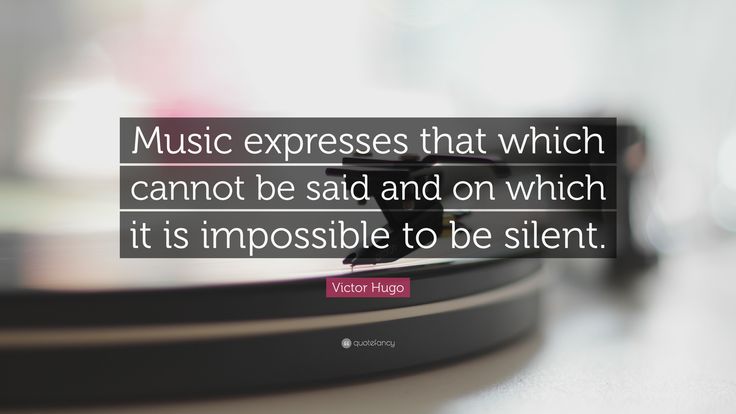 In most cases, it is clear what the next numbers will be. By the way, by polling the target audience (that is, everyone who fell in love 🙂 it was found that the sign is read without errors.
In most cases, it is clear what the next numbers will be. By the way, by polling the target audience (that is, everyone who fell in love 🙂 it was found that the sign is read without errors. 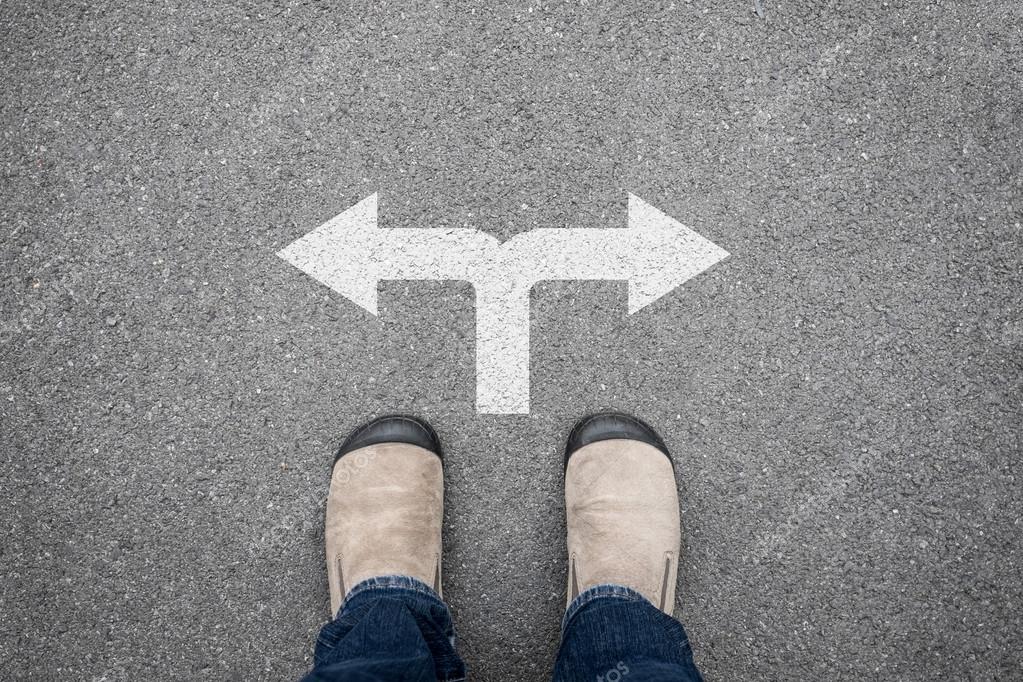
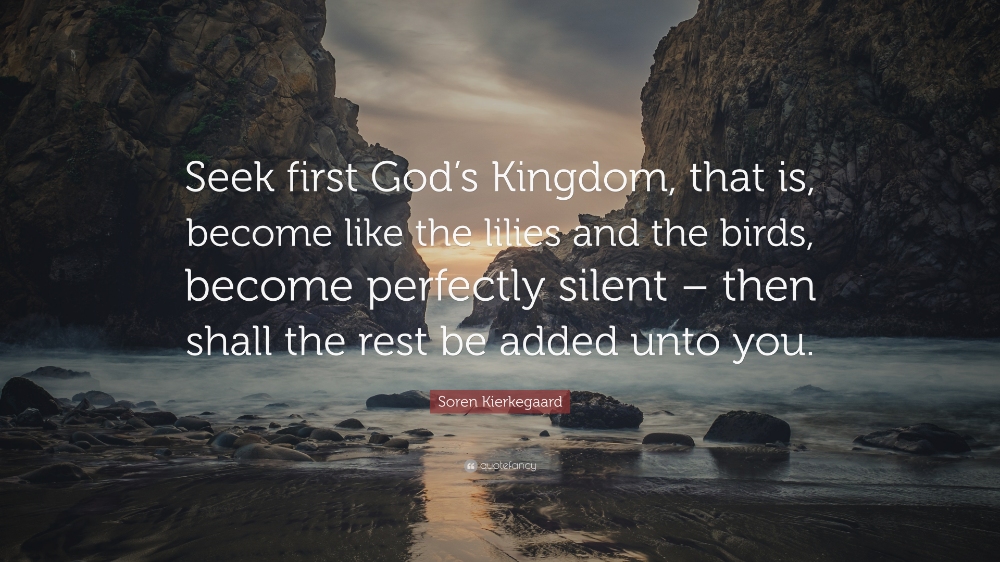
 The rule "From the river and from the center to the outskirts" does not always work.
The rule "From the river and from the center to the outskirts" does not always work. 
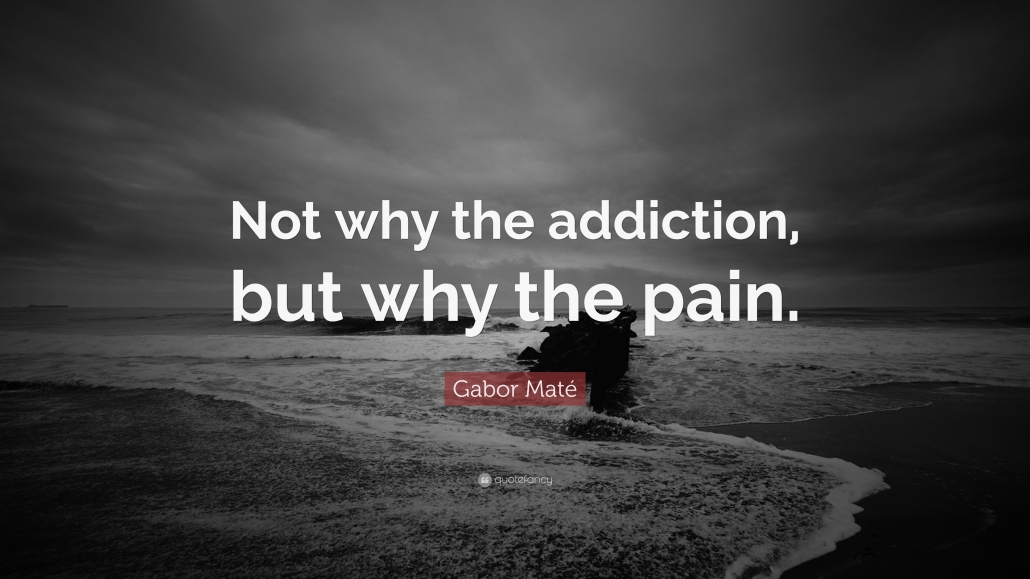 Moreover, this is not used in any other large cities of Lithuania.
Moreover, this is not used in any other large cities of Lithuania.  When you miss a train, you don't have to run +1 car to determine the direction of the car numbers. Of course, for the case when you listened to "The numbering of cars starts from the tail of the train."
When you miss a train, you don't have to run +1 car to determine the direction of the car numbers. Of course, for the case when you listened to "The numbering of cars starts from the tail of the train."  All other options make you think longer. I did not have any associations related to the volume level.
All other options make you think longer. I did not have any associations related to the volume level. 